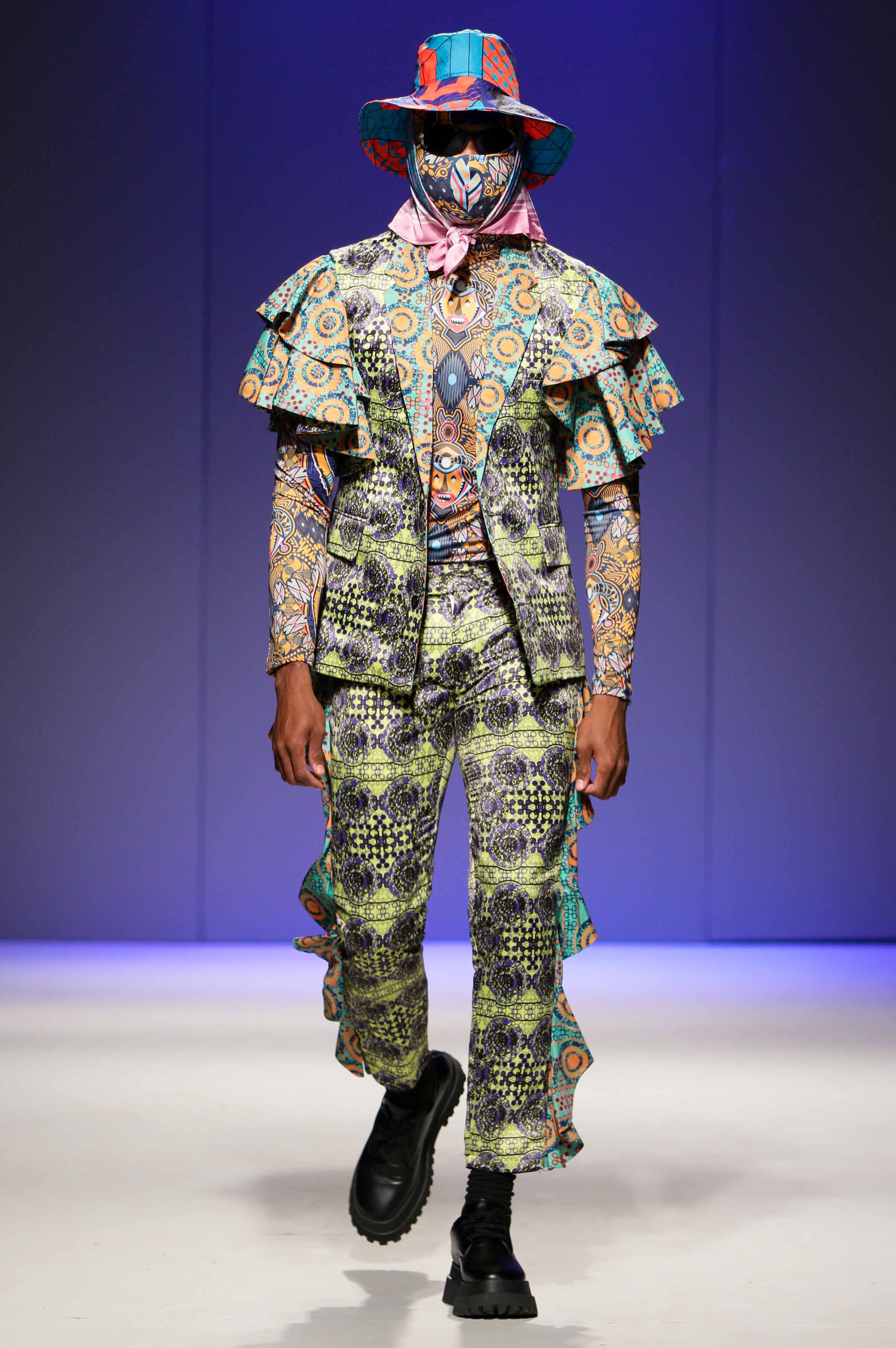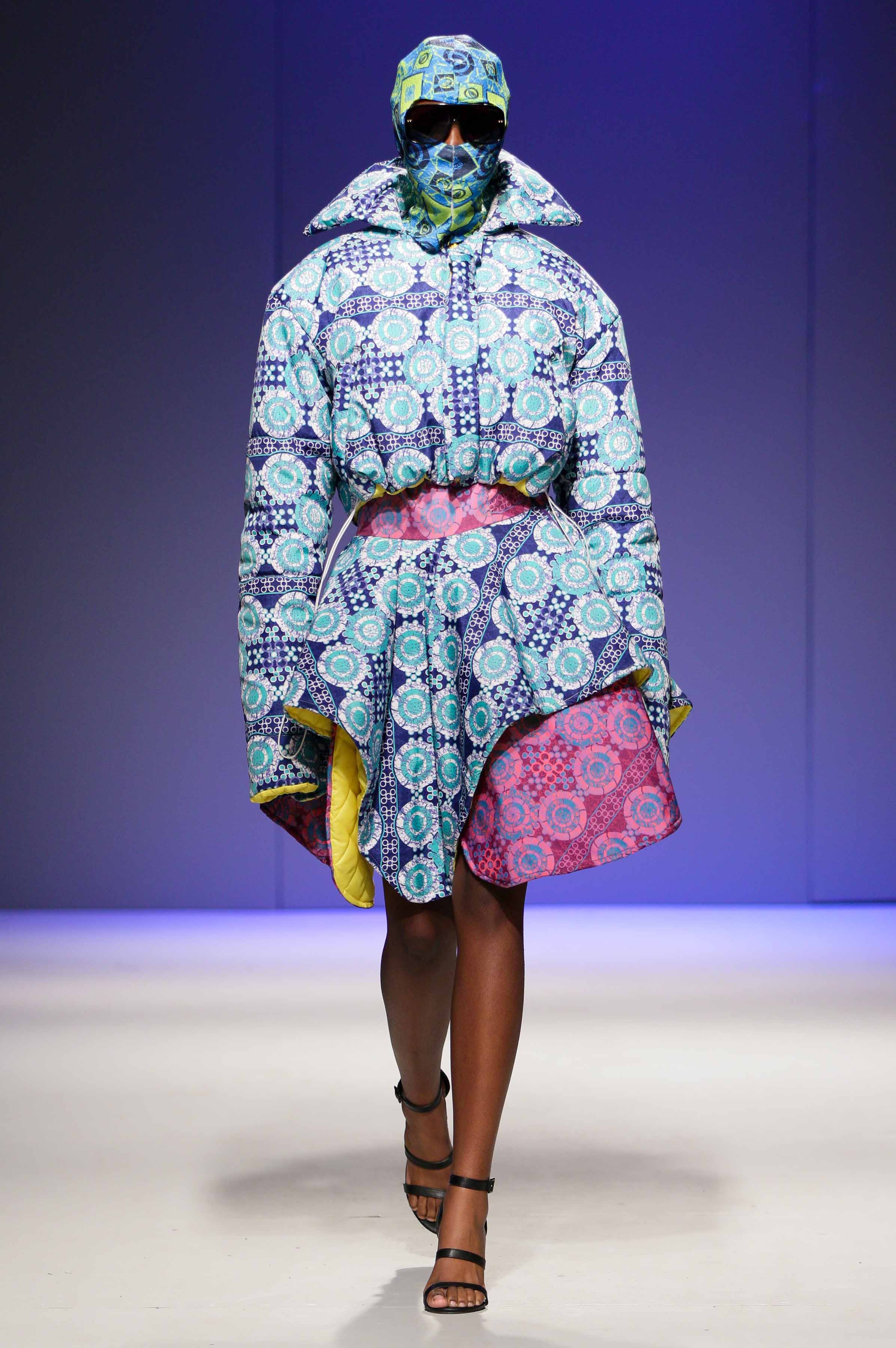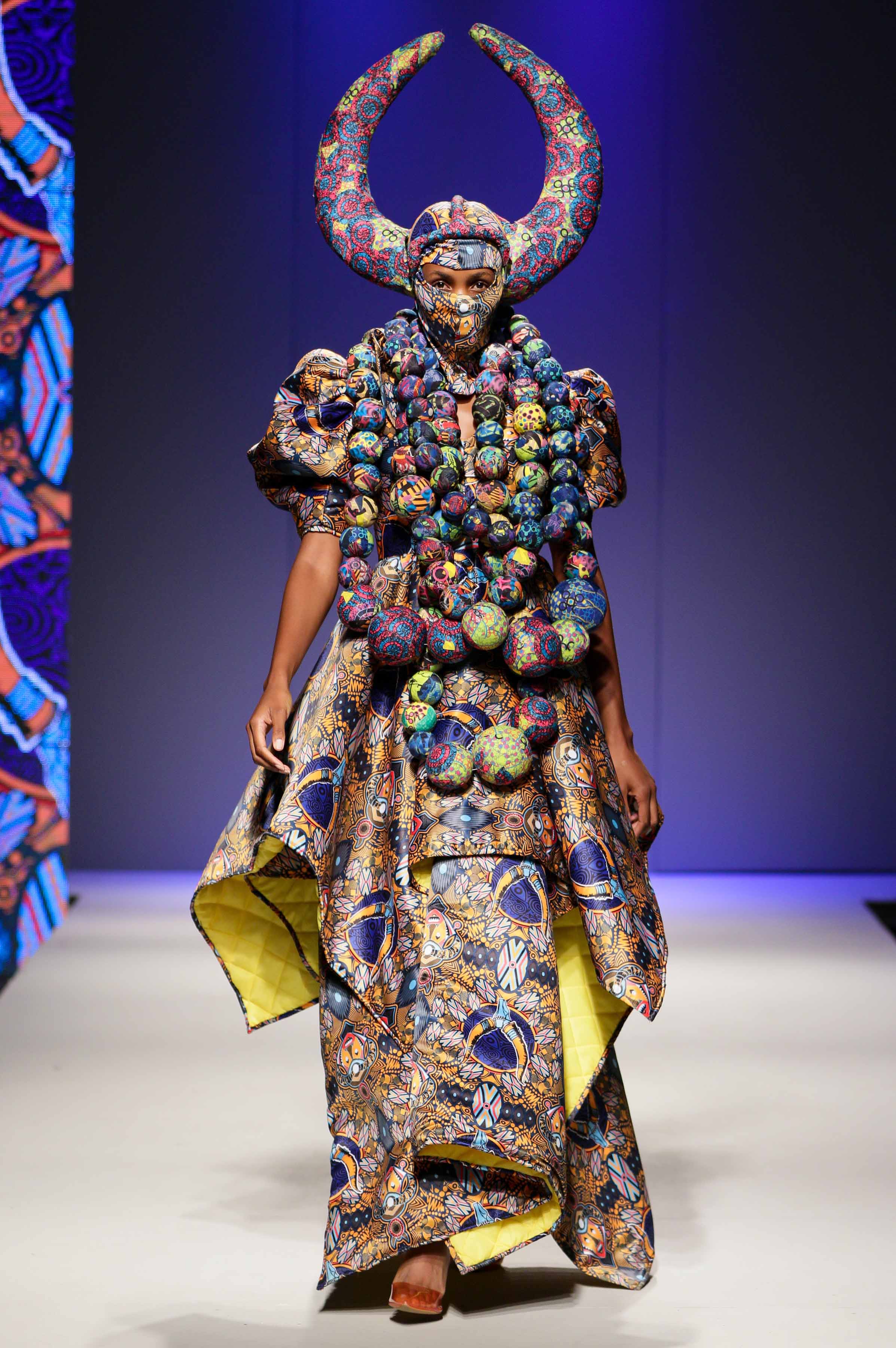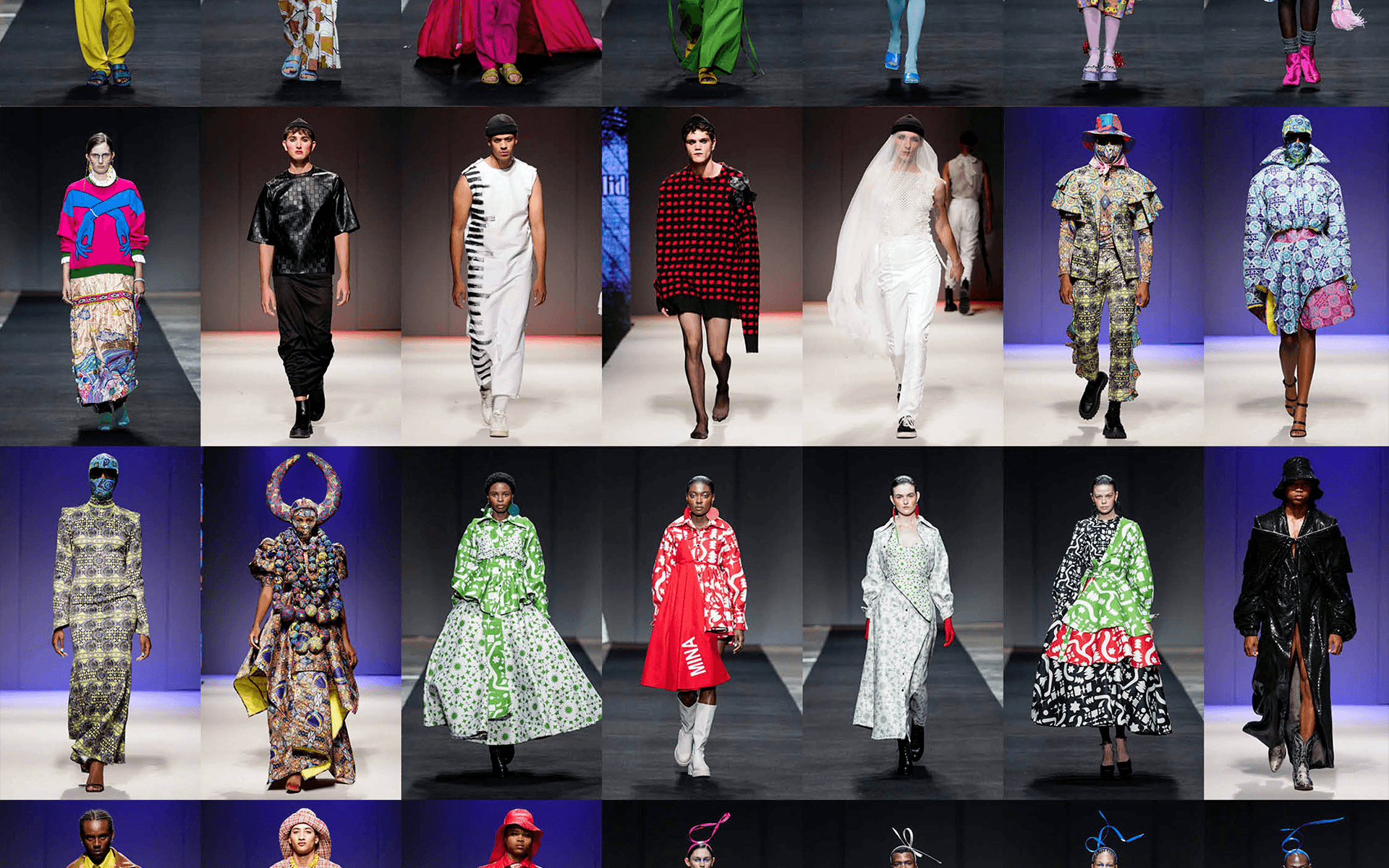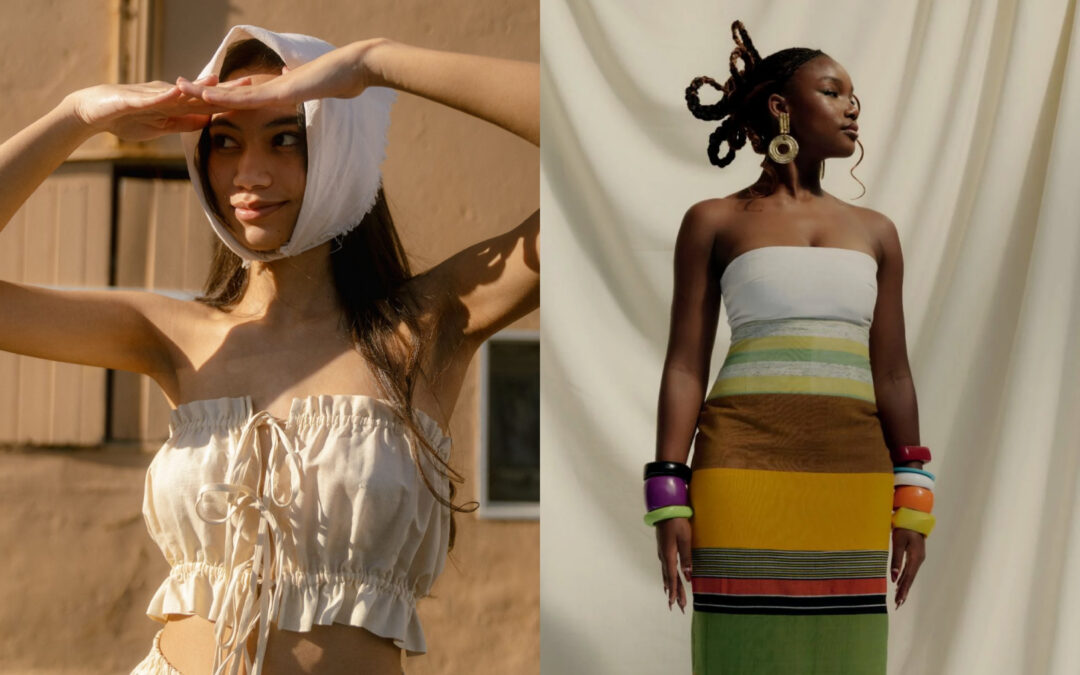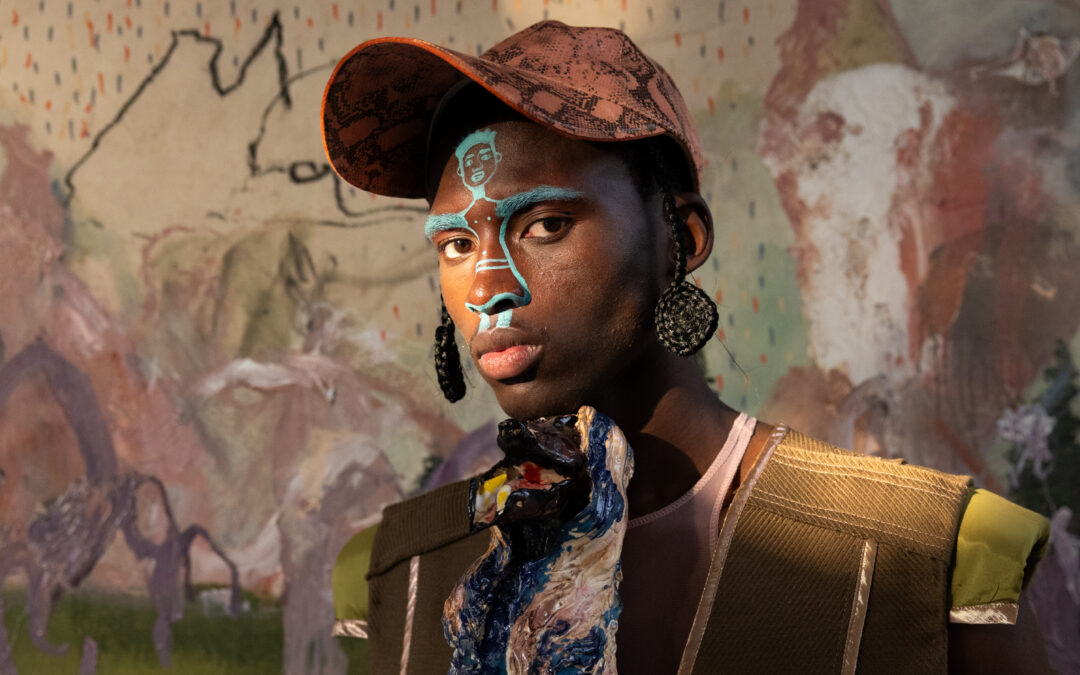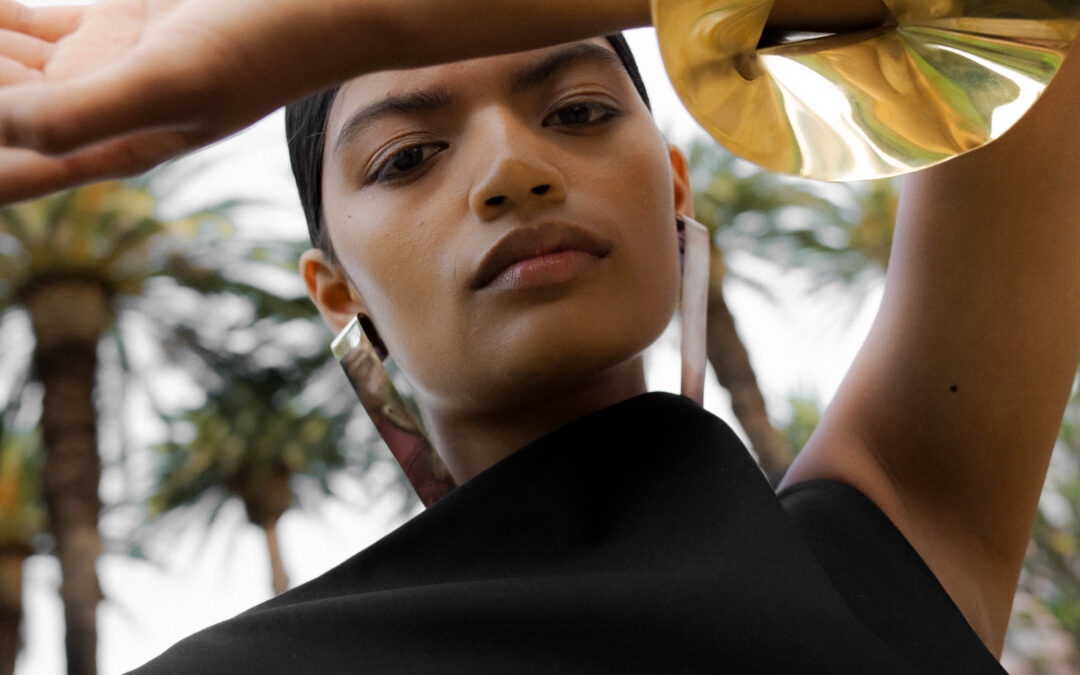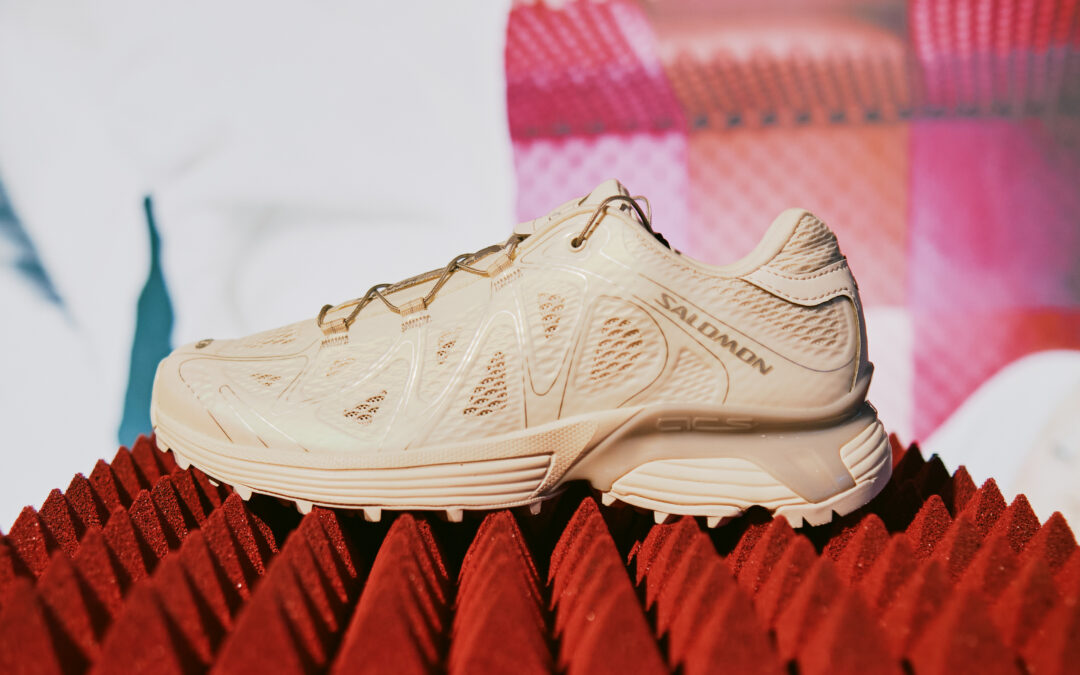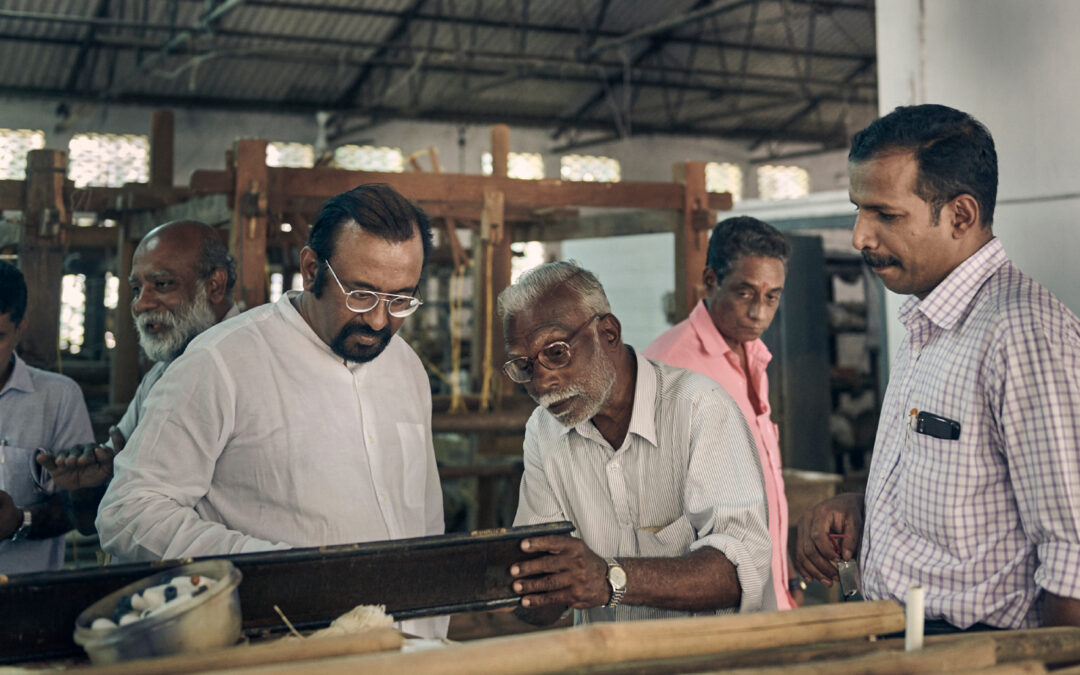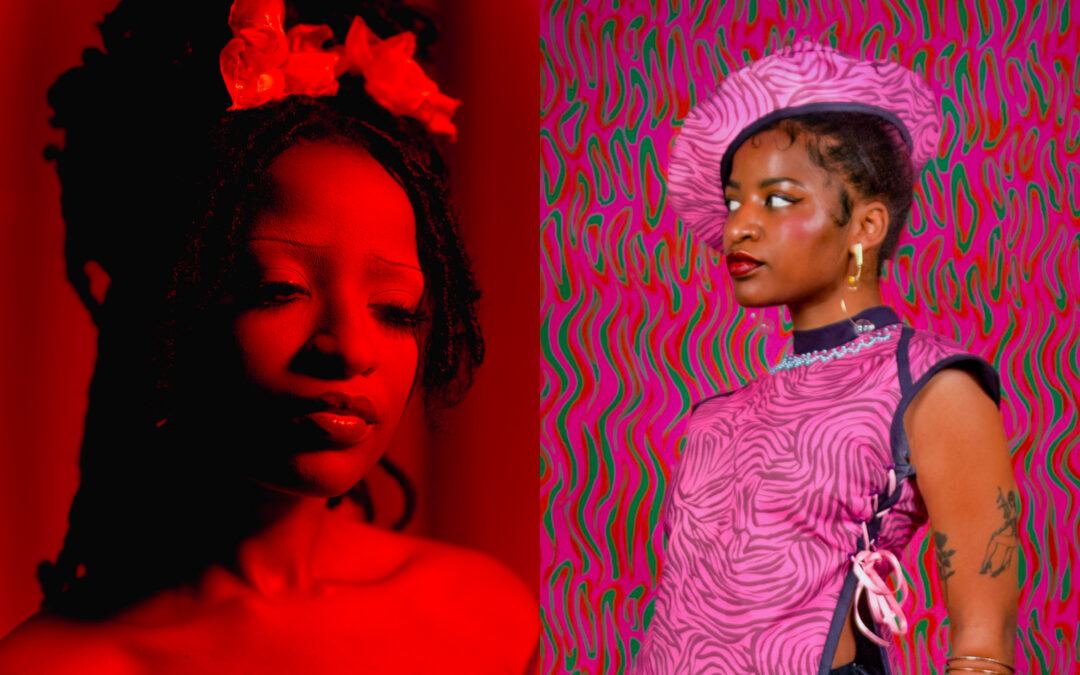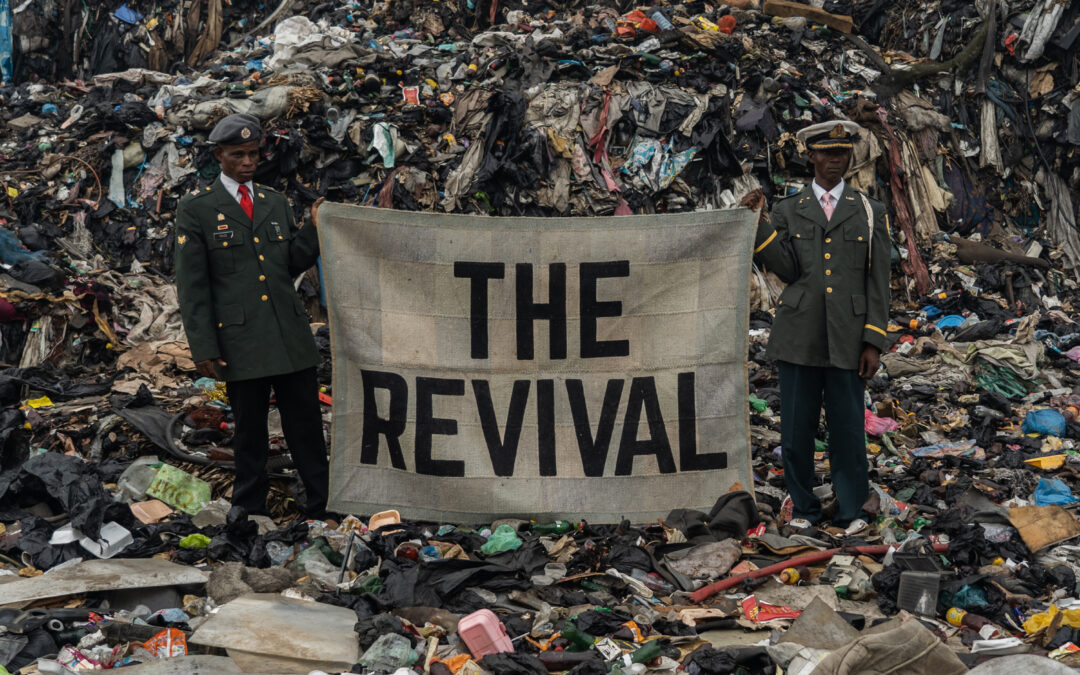Each designer interview for this story was conducted separately, yet their thoughts on the relevance of runway presentations read like a panel discussion at a fictional South African Fashion Convention. “A fashion show is an important touch-and-feel point for a brand” says Neo Serati. “I think the online world is extremely oversaturated. Fashion week provides a platform to ensure optimal focus and attention on one’s work,” says Artho Eksteen. “Seeing the audience connect with the presentation is priceless,” echoes Nyambo MasaMara. “We use the shows as a deadline: something to work toward on the yearly calendar,” explains ALC’s Brendan Sturrock. “Having physical interaction with various industry players and connecting directly with the community is a big plus.” Up-and-comers Jacques Bam and Thando Ntuli double down on the importance of community in building a robust industry that allows new talent to germinate and grow.
News of a merger between two of South Africa’s three major fashion weeks underscored this season’s collections. SA Fashion Week remains in Johannesburg, while SA Menswear Week, now expanded to include womenswear under #WeekOfFashion branding and a CTFC graduate showcase, happens in Cape Town. What exactly this will mean for the industry, no one can say for sure. But two fashion weeks is far better than three: this consolidation, unimaginable in a pre-pandemic world, should enhance the community benefits designers find so valuable.
The standout collections are, to varying degrees, designer autobiographies. MasaMara, this season more than ever, is a modern manifestation of heritage. House of Waalid and Artho Eksteen tell childhood stories through the use of rich, unexpected textiles. MUNKUS pieces are designed not only to stand the test of time in terms of quality, but to be styled to suit various generations of women. The BAM Collective and Nao Serati investigate clothing as a catalyst for evolving identity, while Amanda Laird Cherry provides potent positivity, down to the last seam.
The Amanda Laird Cherry team, a 28 employee-strong studio in Durban, have endured heightened adversity over the past few years with the region’s headline-making environmental and political woes. For them, the key to self-preservation is finding joy, which was interpreted for the runway in various takes on dopamine dressing. “The choice of garment shapes, seam angles and proportions make us feel positive and motivated,” says designer Brendan Sturrock.
A central point of inspiration is the abstract squiggles in an artwork by toddler Josi Currie that informed the collection’s playful abstract prints. Ultra-saturated block colours served as potent shots of energy, and the balance between easy-wearing and theatrical designs speaks to a need for expressive style that doesn’t sacrifice comfort. “I think we all have apparel in our wardrobe that generates genuine happiness,” says Sturrock. “As a design house, we feel we have the responsibility to make those things for people.”

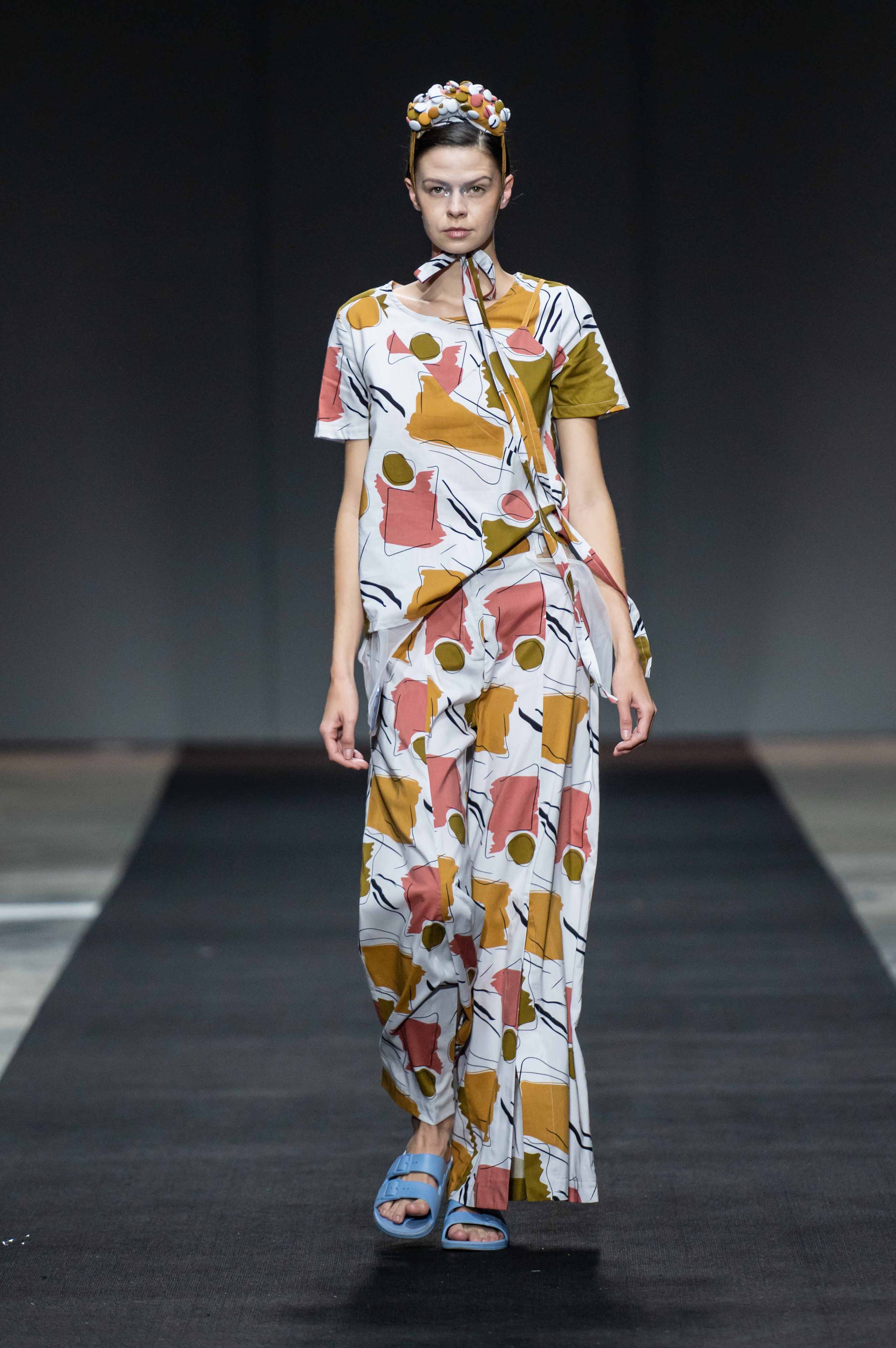
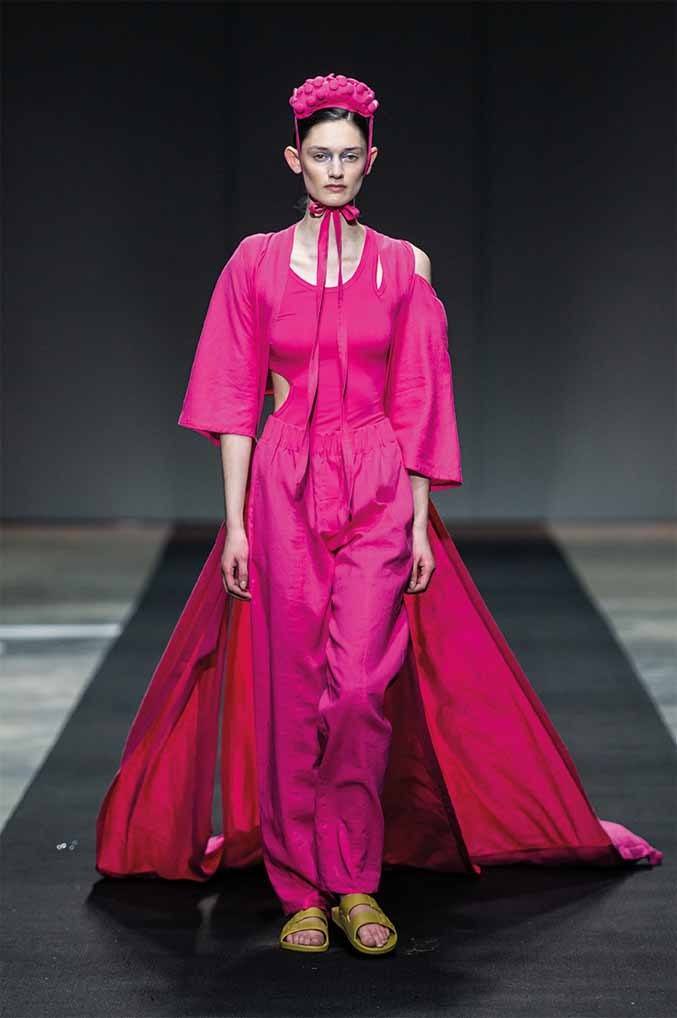
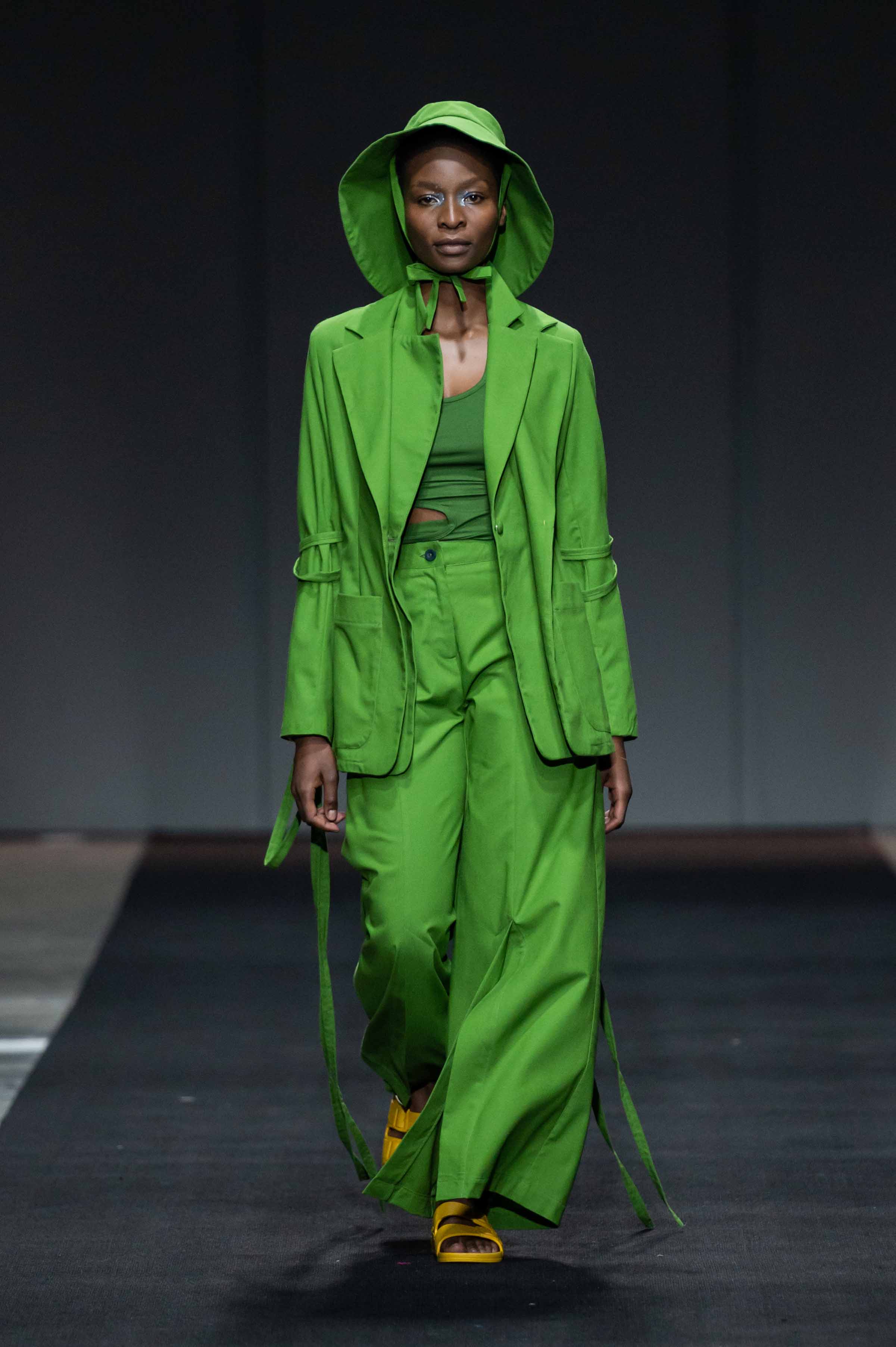
As the saying goes, you need to know the rules before you can break them. Mohammed Waalid is a fashion lecturer at Villioti Fashion Institute in Johannesburg, a perfect position from which to design a collection inspired by the Japanese concept of wabi-sabi: finding the beauty in imperfection. “The collection explores all of these technical nightmares,” says Waalid of the intentional overlocking, exposed seams and uneven hems that gave his collection its grungy through line. “It’s the imperfections that add value and create difference.”
Waalid’s fabric choices have direct autobiographical significance: “the rustling of taffeta makes me go insane. It’s one of my favourite sounds.” The upholstery leather pieces that bookend the collection reference the designer’s father who owns furniture stores and restoration workshops. “As a six-year-old kid, I would watch Videofashion before I went to school,” says Waalid. “I love fashion with all my existence.” It follows that his runway debut had to be a play on the traditional haute couture formula: “the finale has to be a bride, but I love the idea that this was a menswear collection and yet we still had a bride. It’s very tongue-in-cheek.”
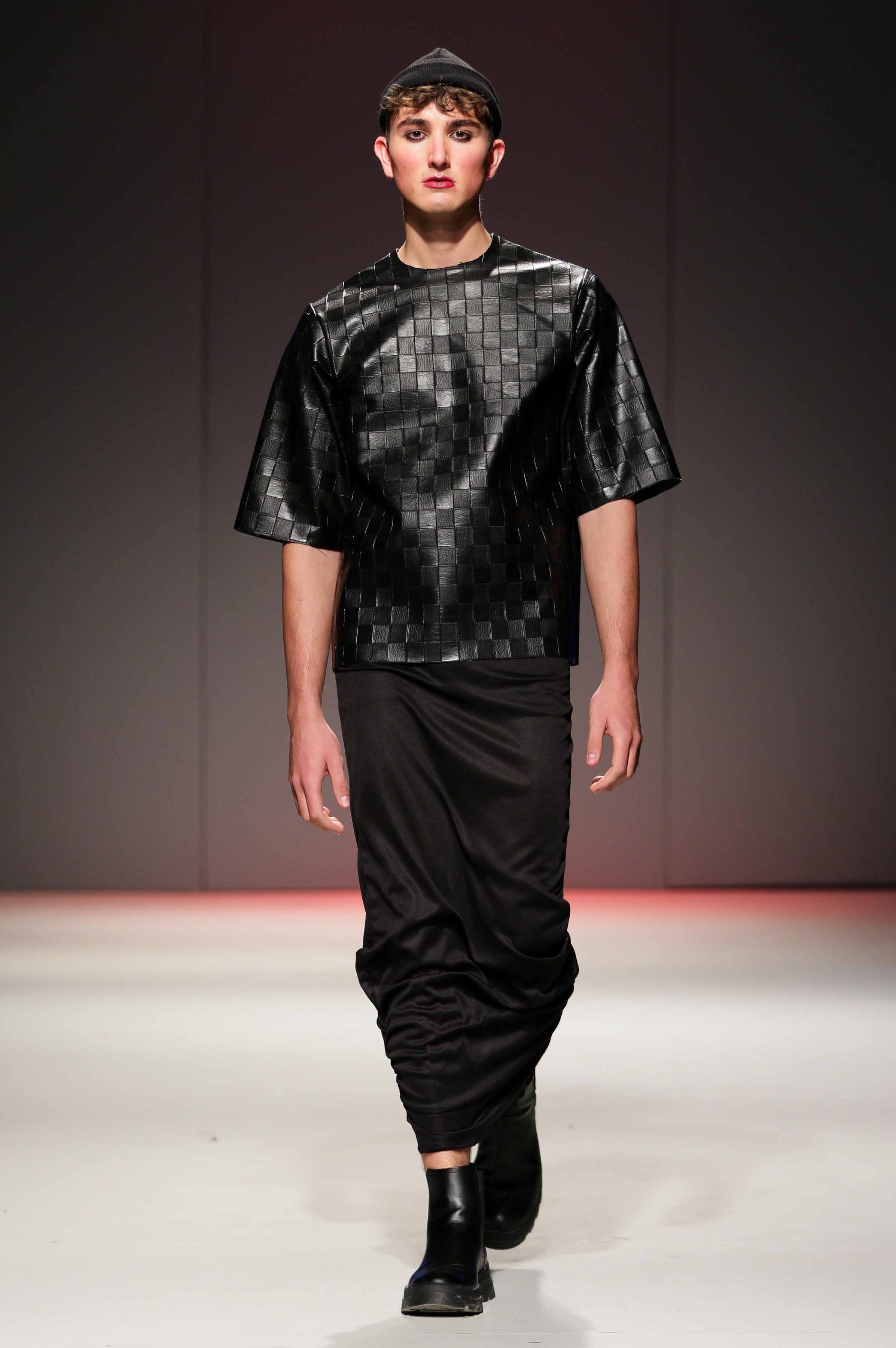
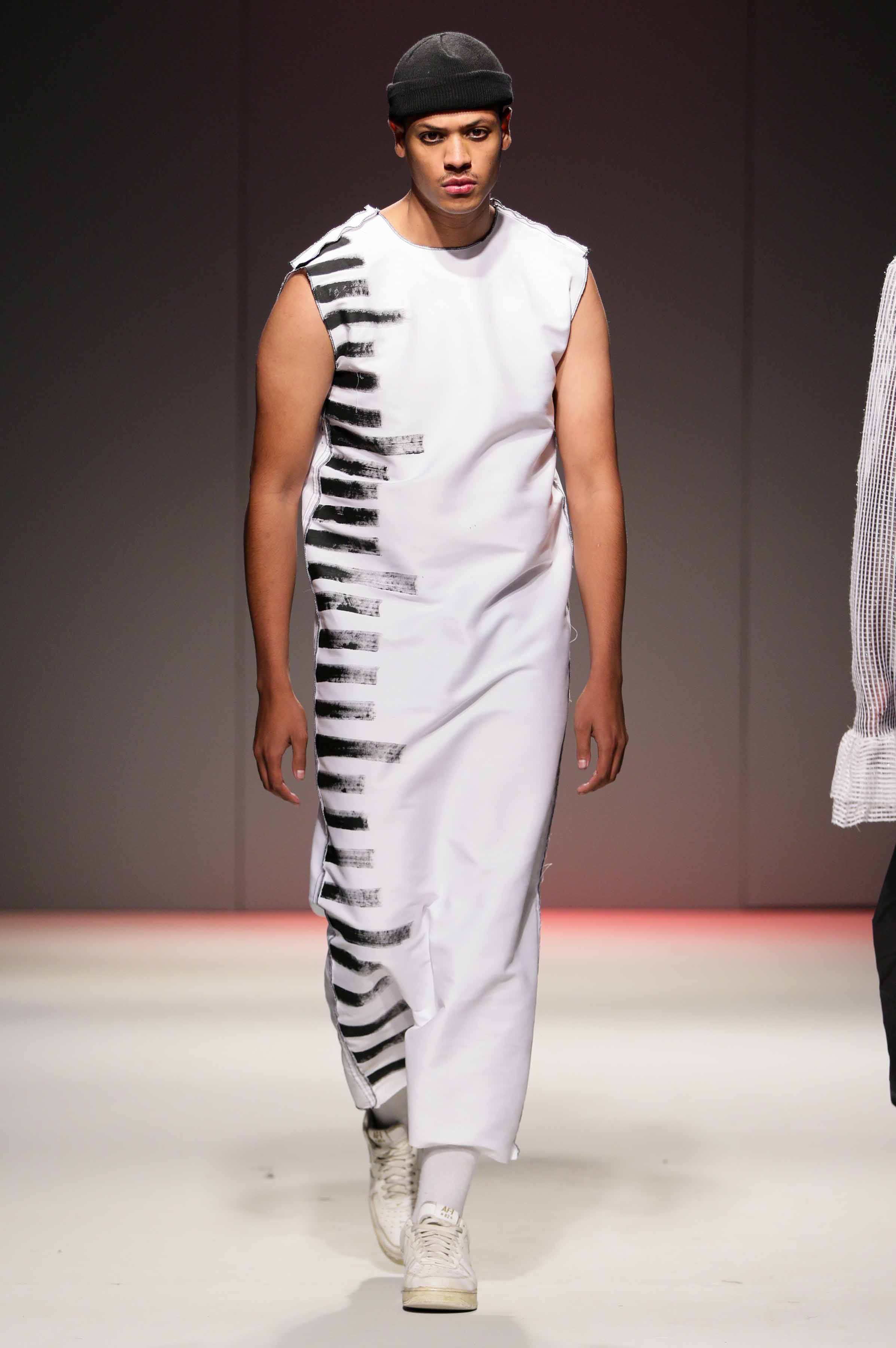
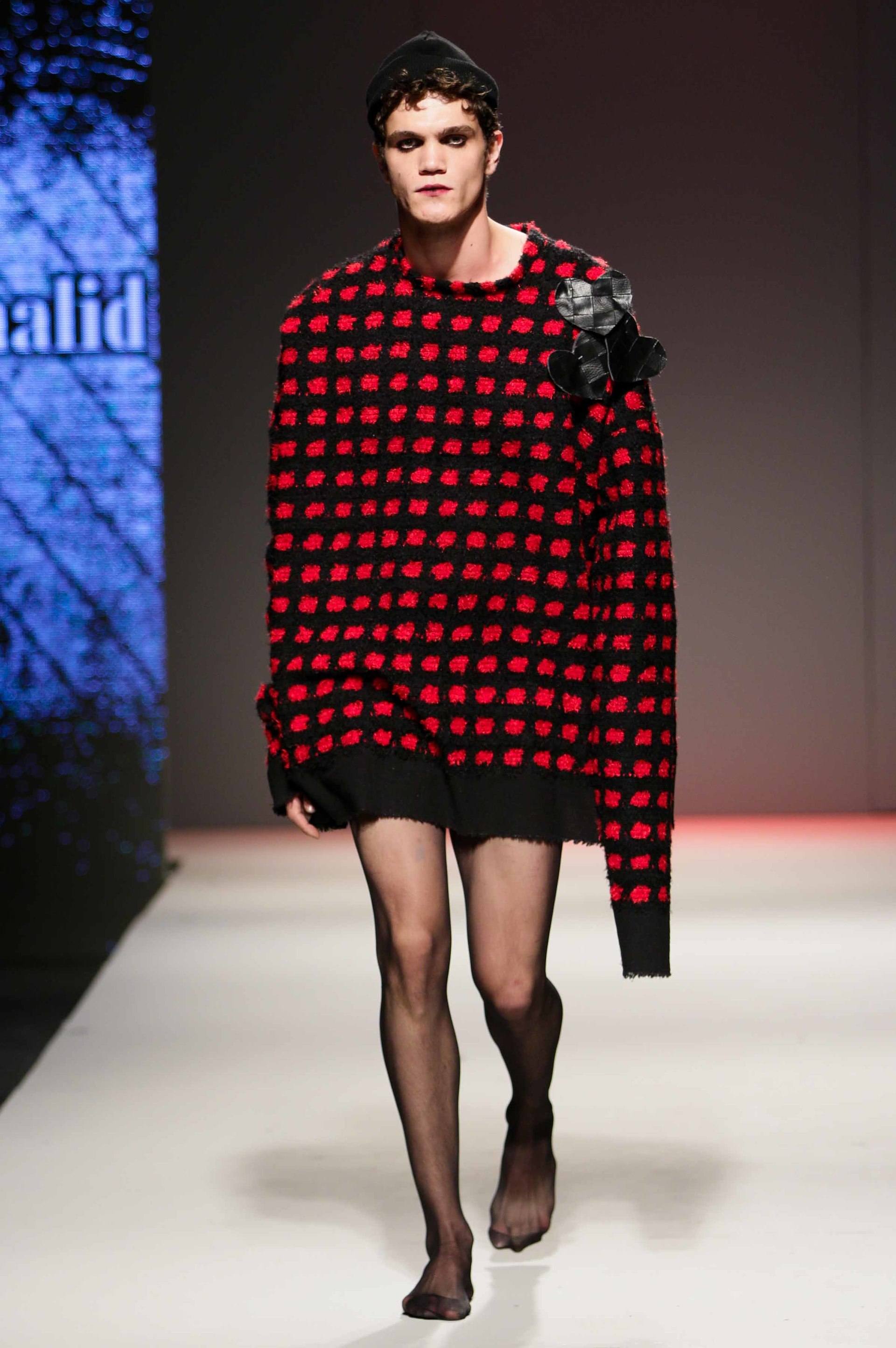
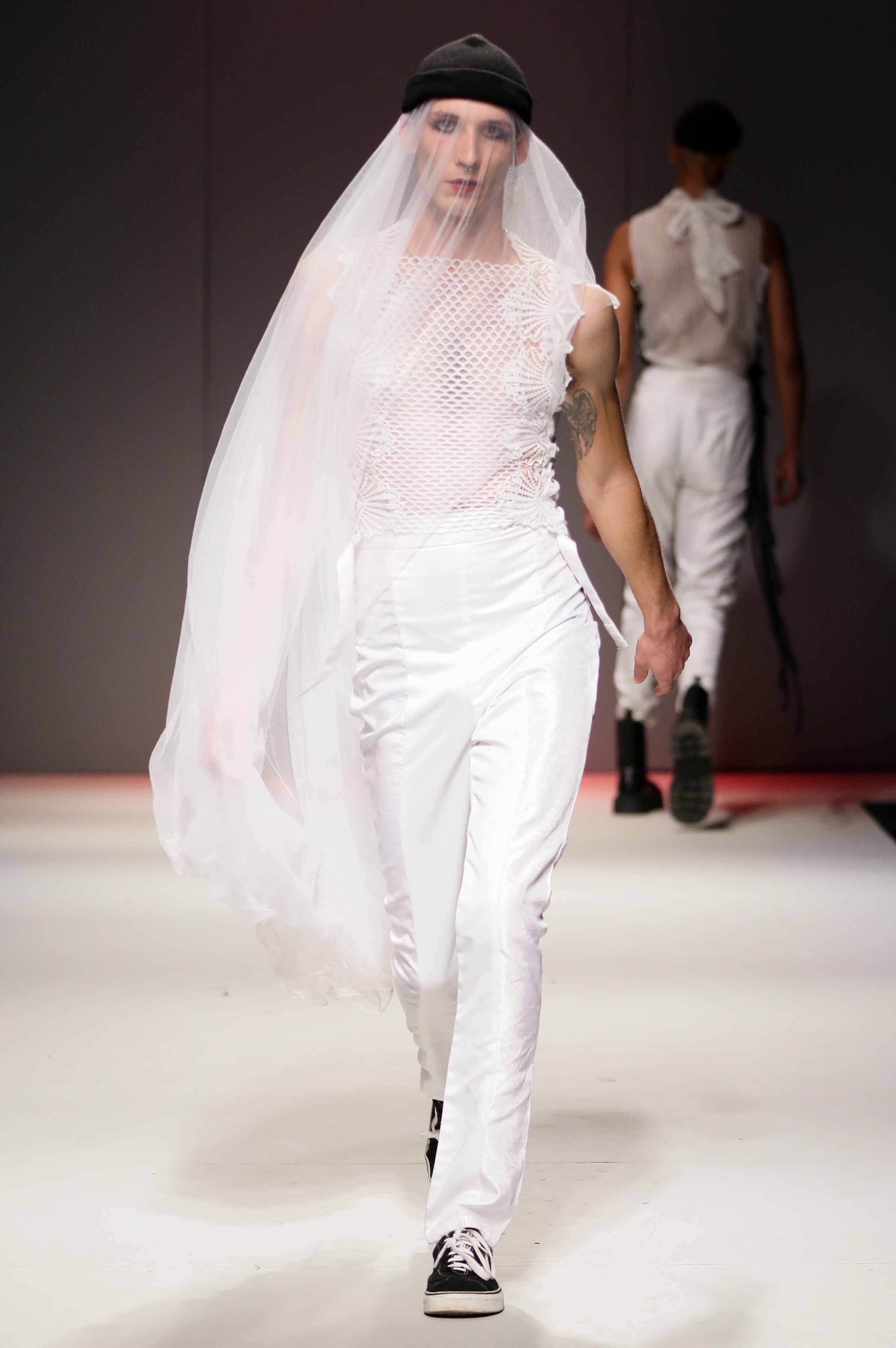
Each MUNKUS look is named “Me” in a different South African language. There’s Me, Mina, Nna, Mna, Nne, Mine, and the finale, We. This is designer Thando Ntuli’s runway debut and a love letter to South African women. Distinctive takes on contemporary closet staples from suiting to shirt dresses are energised with a treasure map-inspired print in hues representing life and growth. The collection’s flared silhouettes feel both modern and like a throwback to mid-century femininity; “it is based on closing a generation gap,” says Ntuli. “The looks have layered pieces that allow each woman to wear it the way they want. My goal was to help women find themselves by giving them an extension of their personality.”
Sustainability by way of longevity is an integral component of the design process, which plays effortlessly into this collection’s narrative. Using sturdy recycled denim as a key fabrication allows Ntuli to create quality, durable pieces she intends her clients to pass down to the next generation. Her effortless amalgamation of conscious design with a strong aesthetic point of view makes her a worthy recipient of SA Fashion Week’s 2022 New Talent Search award. “Winning has shown me how important authenticity is, to be true to my design style and storytelling through my clothing,” says Ntuli.
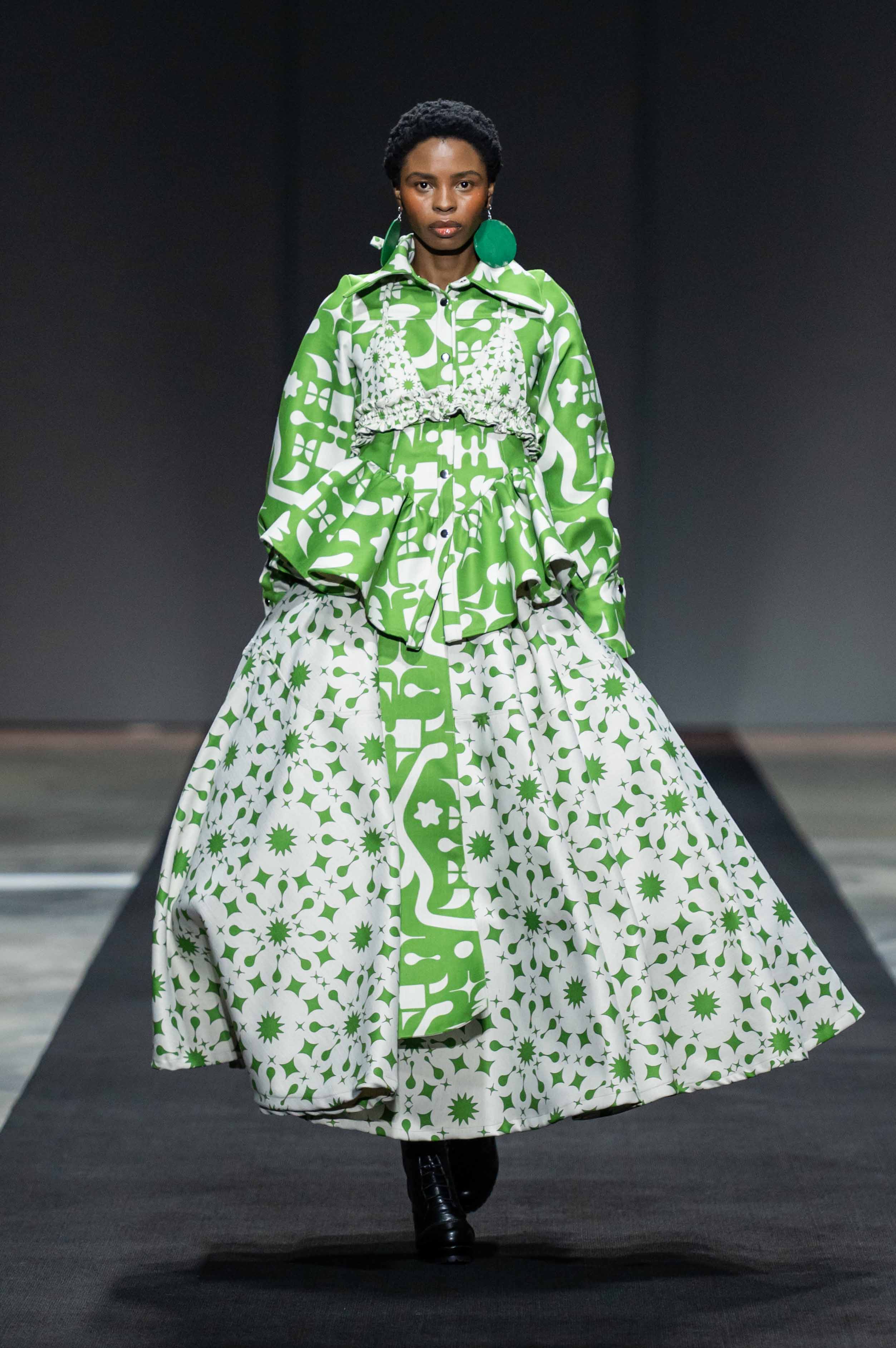
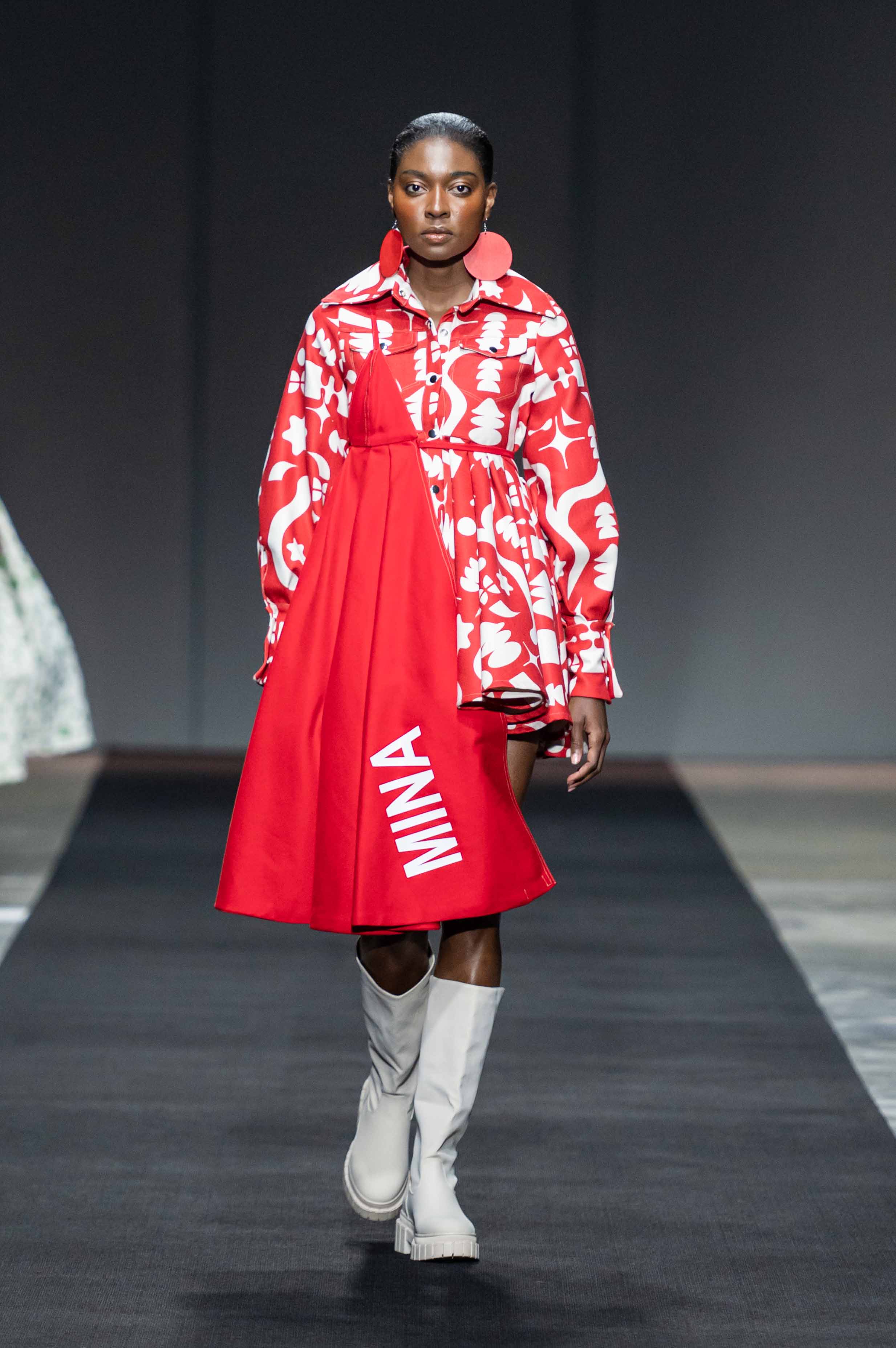
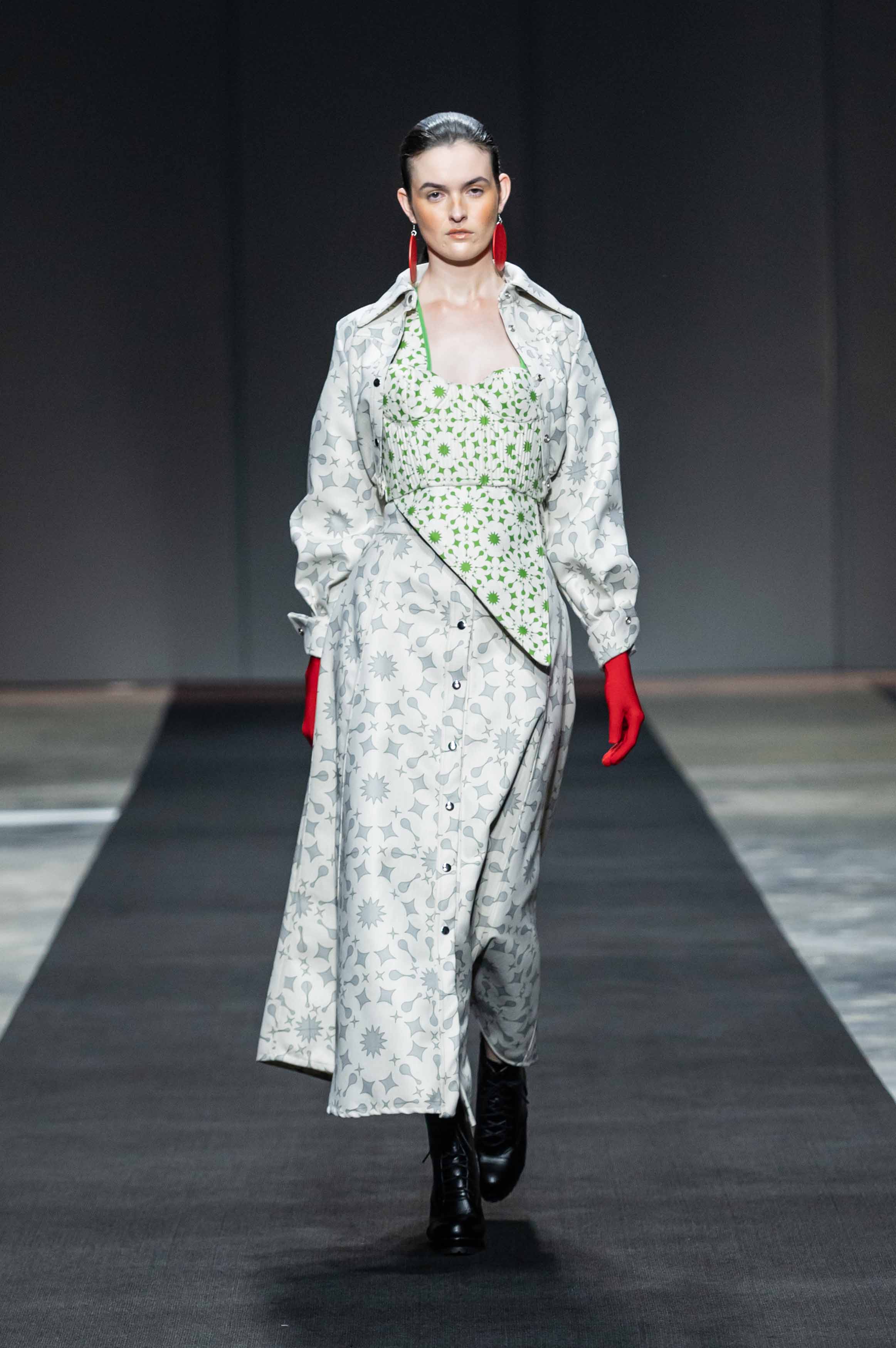
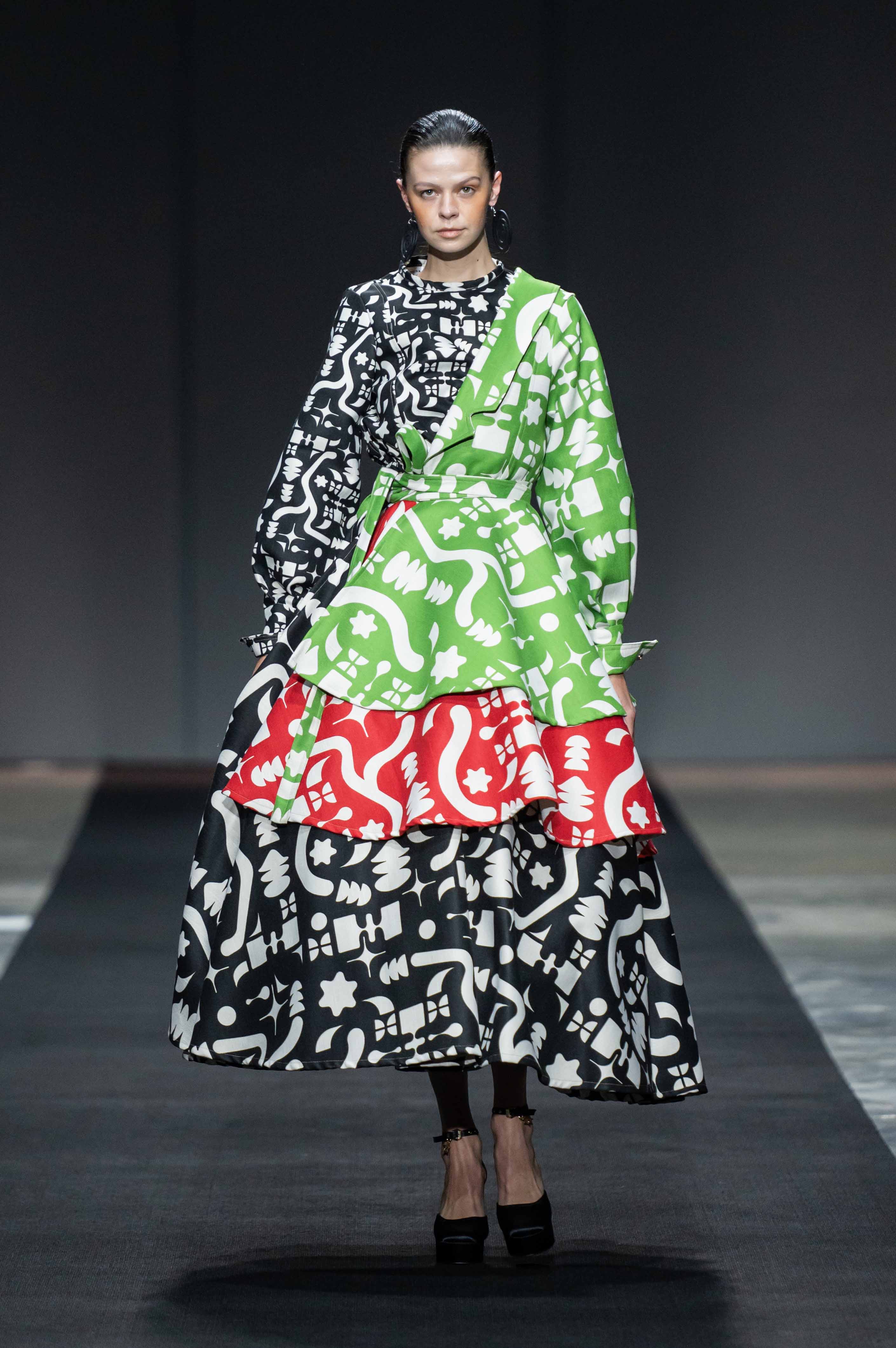
Fans will notice a fascinating recalculation of the Nao Serati style equation. Since its Menswear Week debut in 2016, the brand has been at the forefront of expanding the masculine clothing spectrum on the local runways, enriching it with feminine design codes. This year’s collection flips the script: choosing to explore overt masculinity through a camp lens that both revels in its aesthetic appeal and exposes its artifice.
“I went into this collection wanting to challenge myself to focus on silhouettes, colours and feelings,” says Neo Serati. “We open with sequins to remind you who we are, styled masc in a floor length coat, but the coat opens to reveal a matching G-string.” The collection thrives on its exhibition of varied, tactile fabrics: “we have some bruised brown PVC because we love a challenge. Then we warm up with some blood red velvet drama and end with a bouncy brocade because we’re going to church on Sunday.”
The soundtrack, Runaway by Ye’s repetitive opening E note, built tension and conjured a sense of unease in the show venue. “NAOSERATI’22 is called SELLO, which means the sound of crying in Sotho,” qualifies Serati. “I wanted to discuss the feeling of forgiving someone who took their own life: the darkness you experience but also the understanding of a pain relieved.”
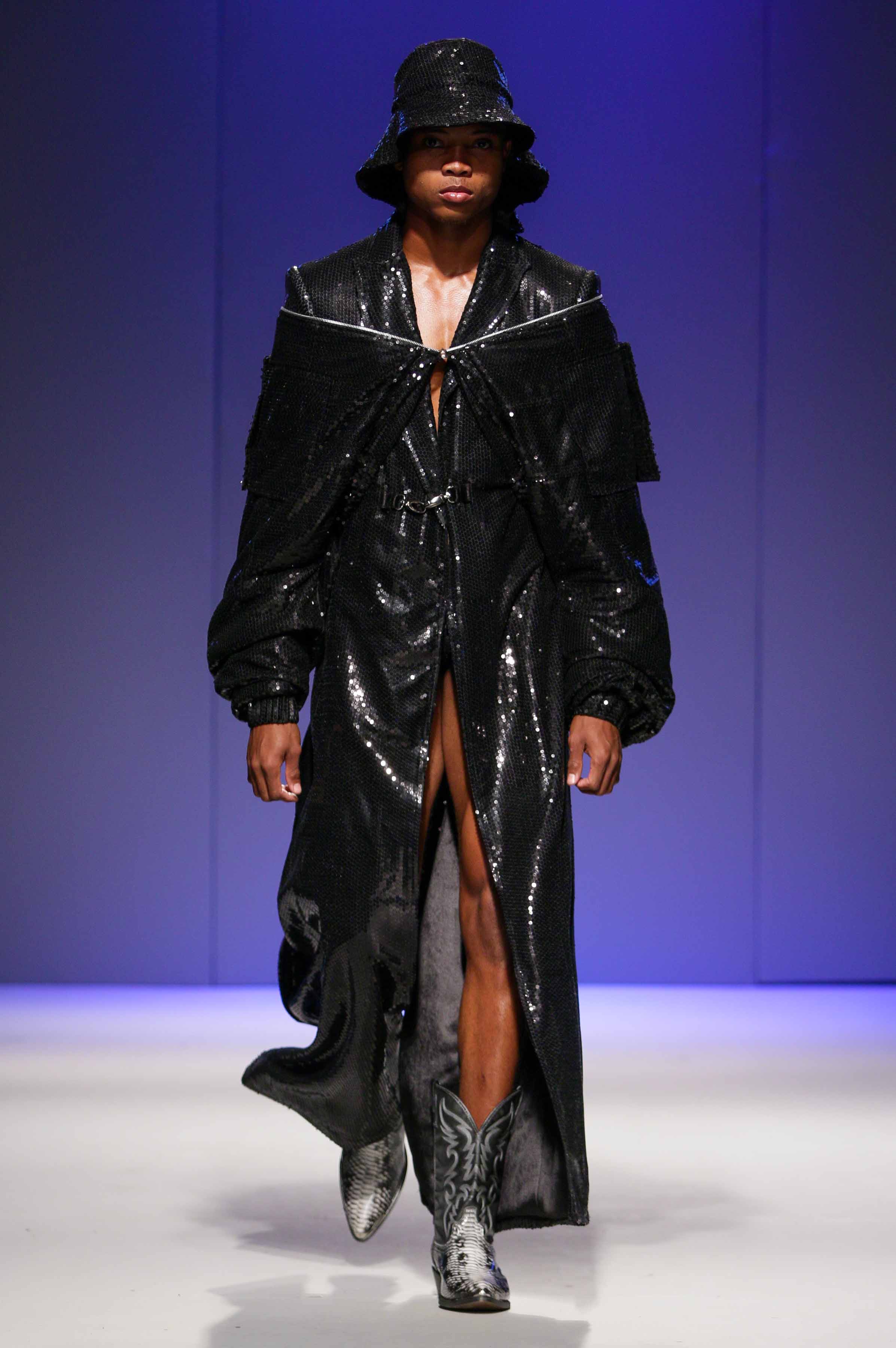
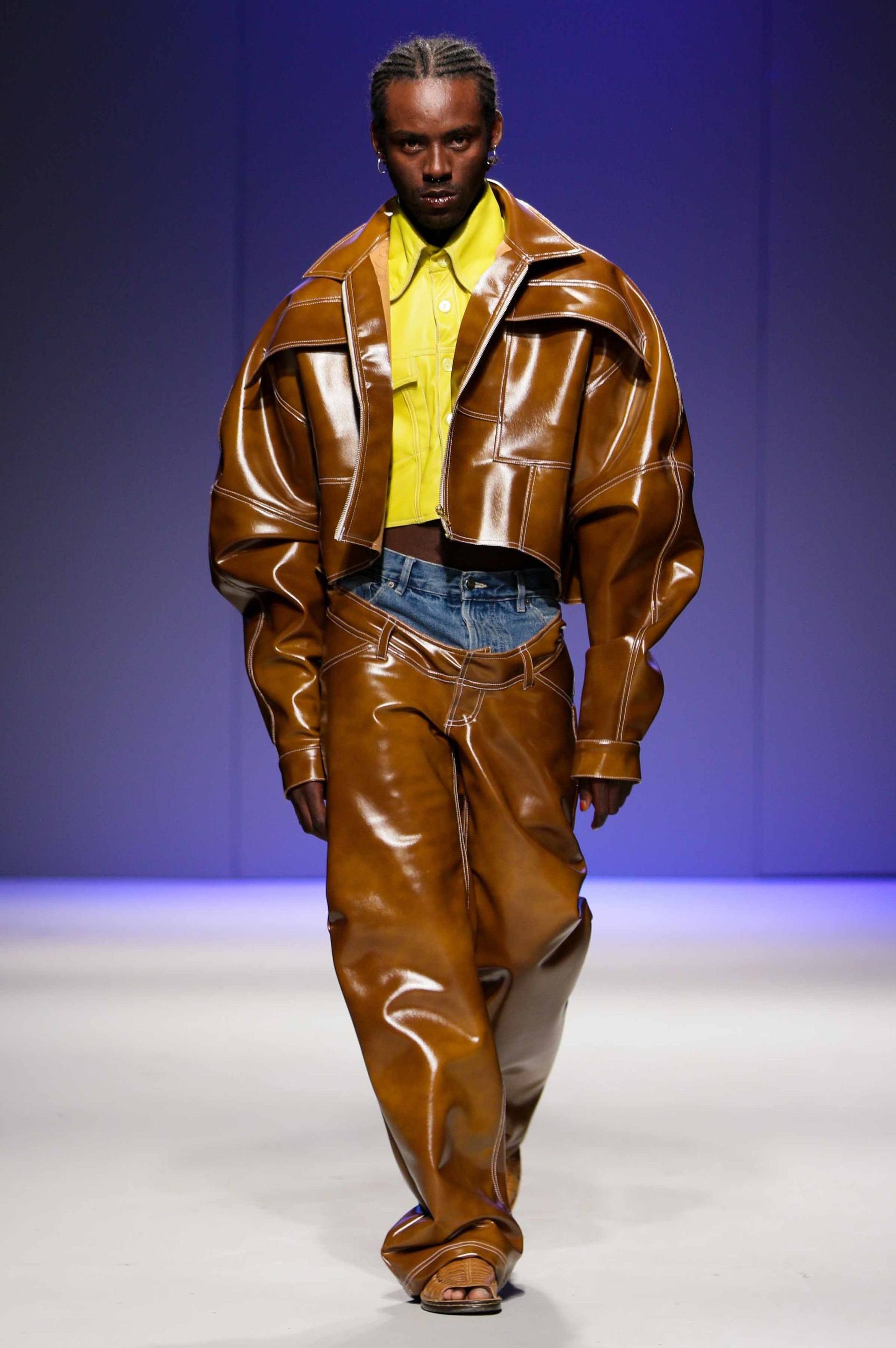
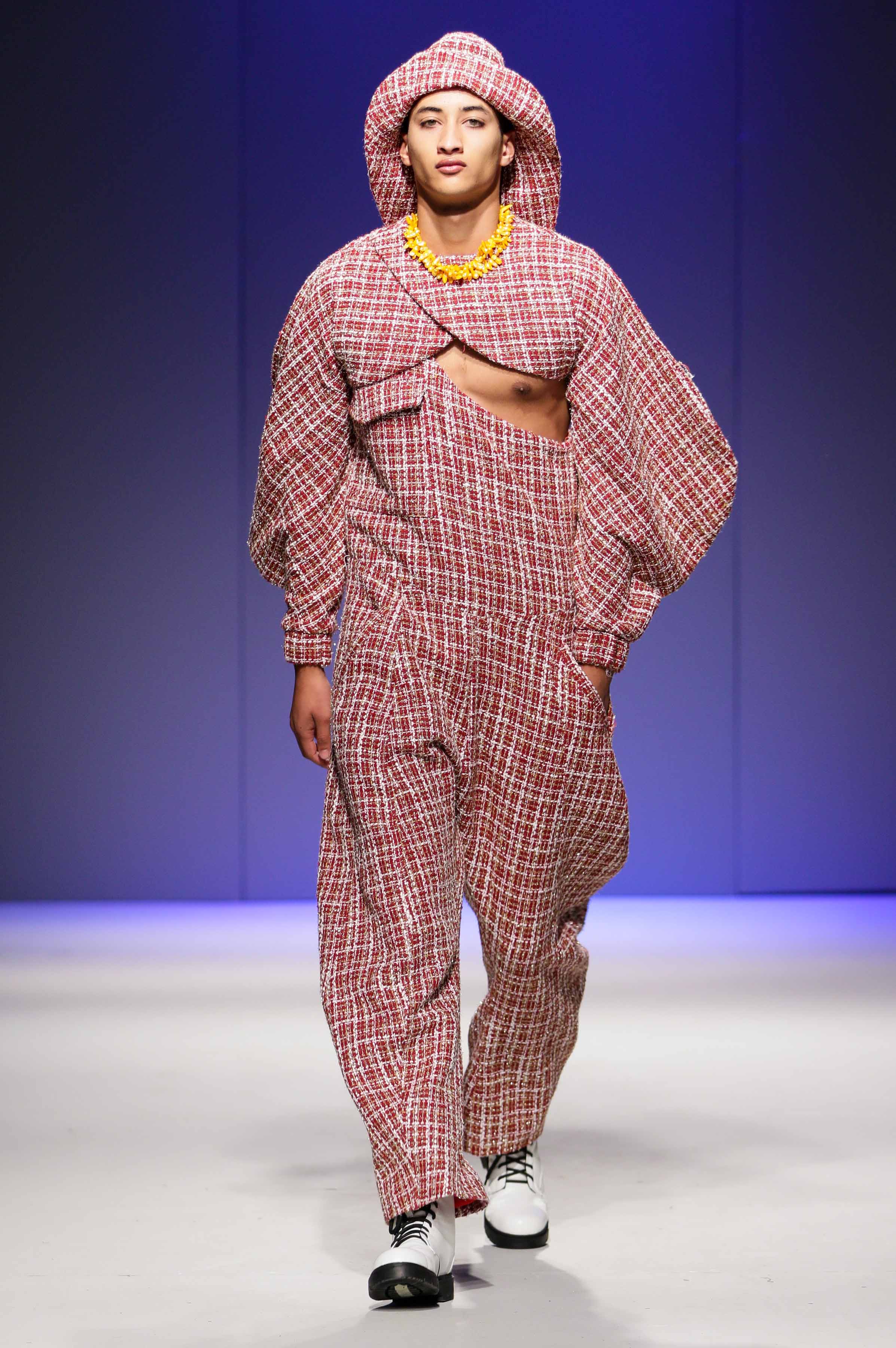
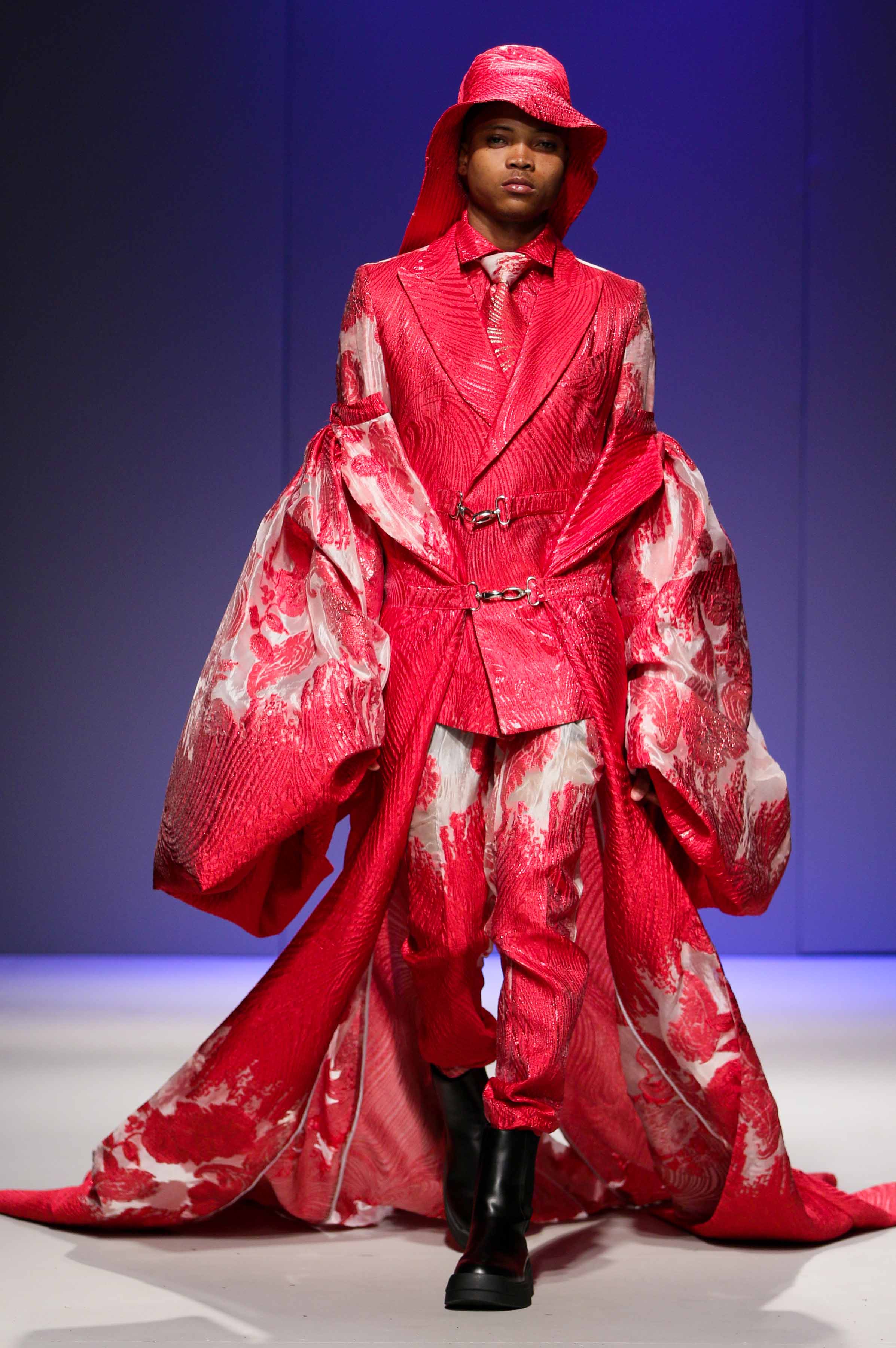
“I would define a forever piece as one that is not only ‘forever’ in traditional ways, for example timeless, well made and classic, but also something that has a more sentimental place in your wardrobe,” says Artho Eksteen. Last year’s SA Fashion Week New Talent Search winner, the young designer is a master of thoughtful eccentricity, creating narrative-rich trophy pieces to treasure for trend agnostics who identify with his surrealist world.
A sense of the personal is key to Eksteen’s collection, inspired by the textiles of his childhood home. Unique custom prints (where else can you find a floral dress with an outburst of aliens amongst the blooms?) set the tone for beads, embroidery and appliqué techniques that add depth and enhance quirk. “I enjoy embracing the organic development of a collection and to see how this influences the final result as samples are being completed and unique fabrics are being produced,” says Eksteen. “Things are added and taken away in the process—I think it’s quite fun not to know exactly how a collection or garment is going to turn out.”
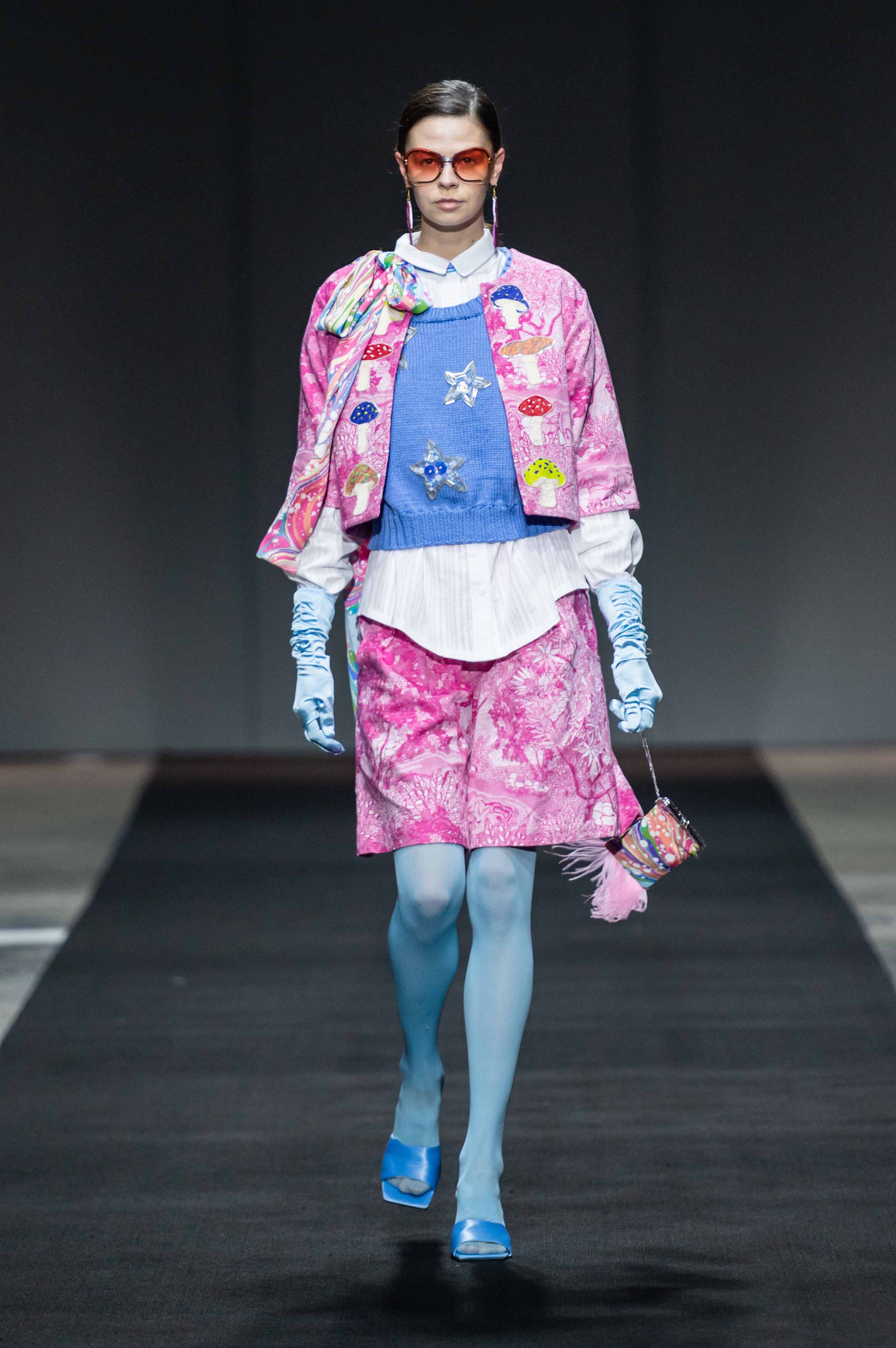
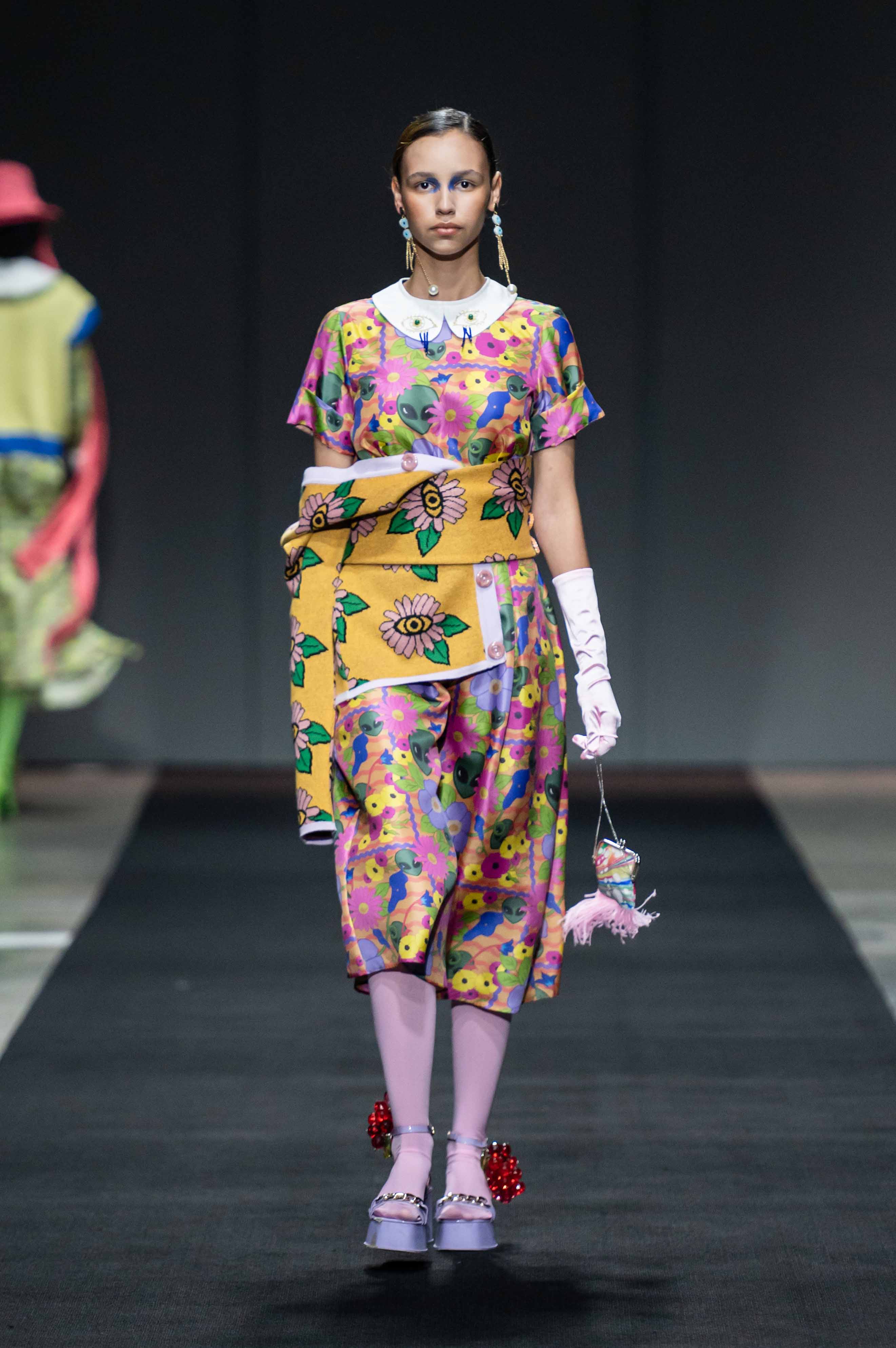
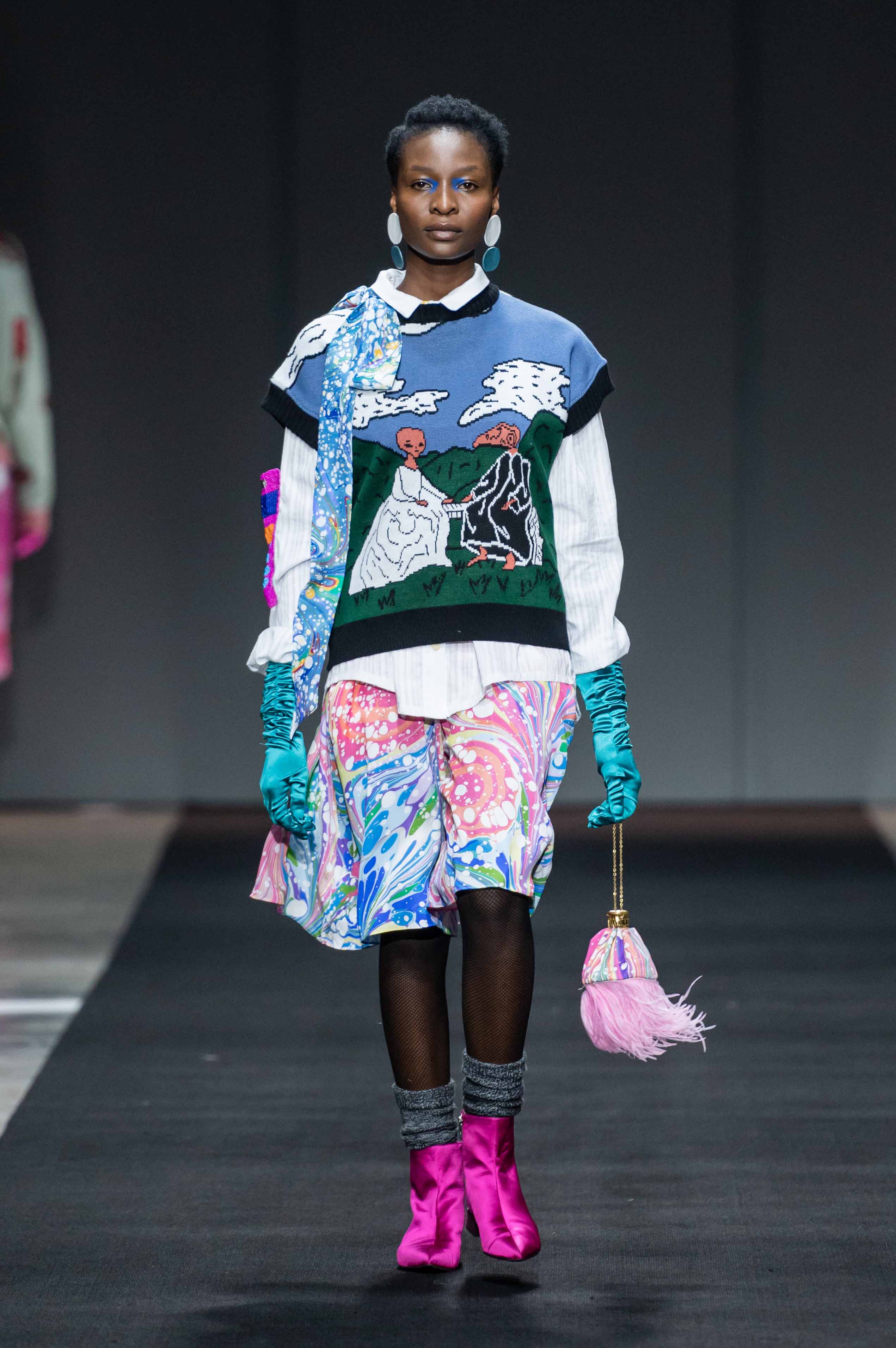
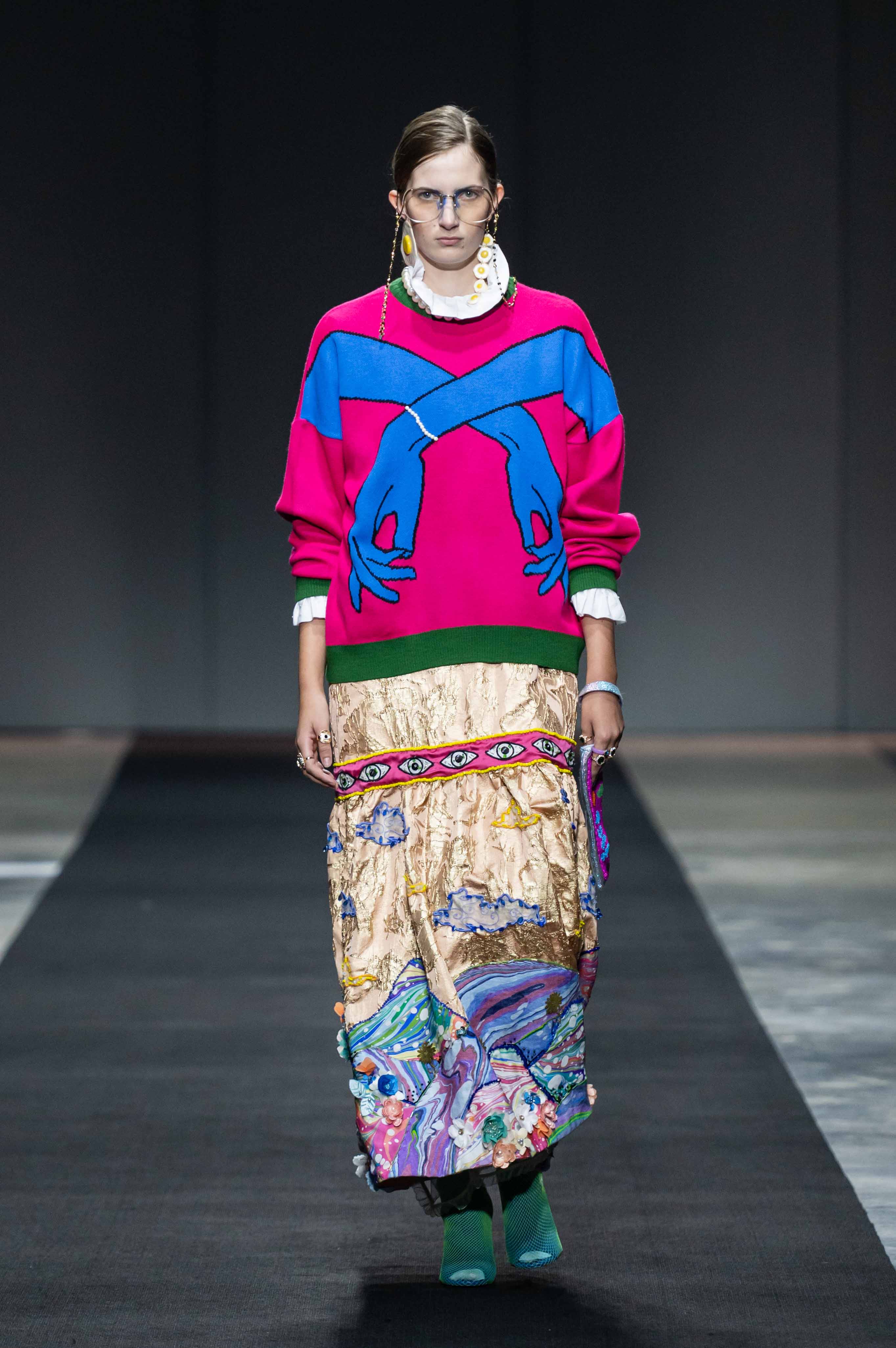
Jacques Bam had an aesthetic vision for his collection prior to rediscovering the Fauvist movement of the early 1900s in an art history book. The emotionally driven renders in deliberately unnatural hues resonated with the designer, fuelling his design process. Partial abstraction of the subject is the connecting factor between Henri Matisse’s 1905 paintings and Bam’s 2022 clothing, the latter a feast of curves and swerves in electric hues, substantial knitwear and iridescent sequin mesh, morphing the human form like a fashionable funhouse mirror.
“I think it takes a certain amount of confidence to wear my clothes,” says Bam. He’s looking to push the boundaries of commercial clothing, shifting consumer thinking by allowing people the opportunity to use fashion as a tool for personal growth. “Exploring clothing has been invaluable in creating the individual I am today and has given me incredible confidence and surety in who I am,” says Bam. “That is what I want: a world where everybody is allowed to grow and become the best version of themselves in a way that is really fun.”
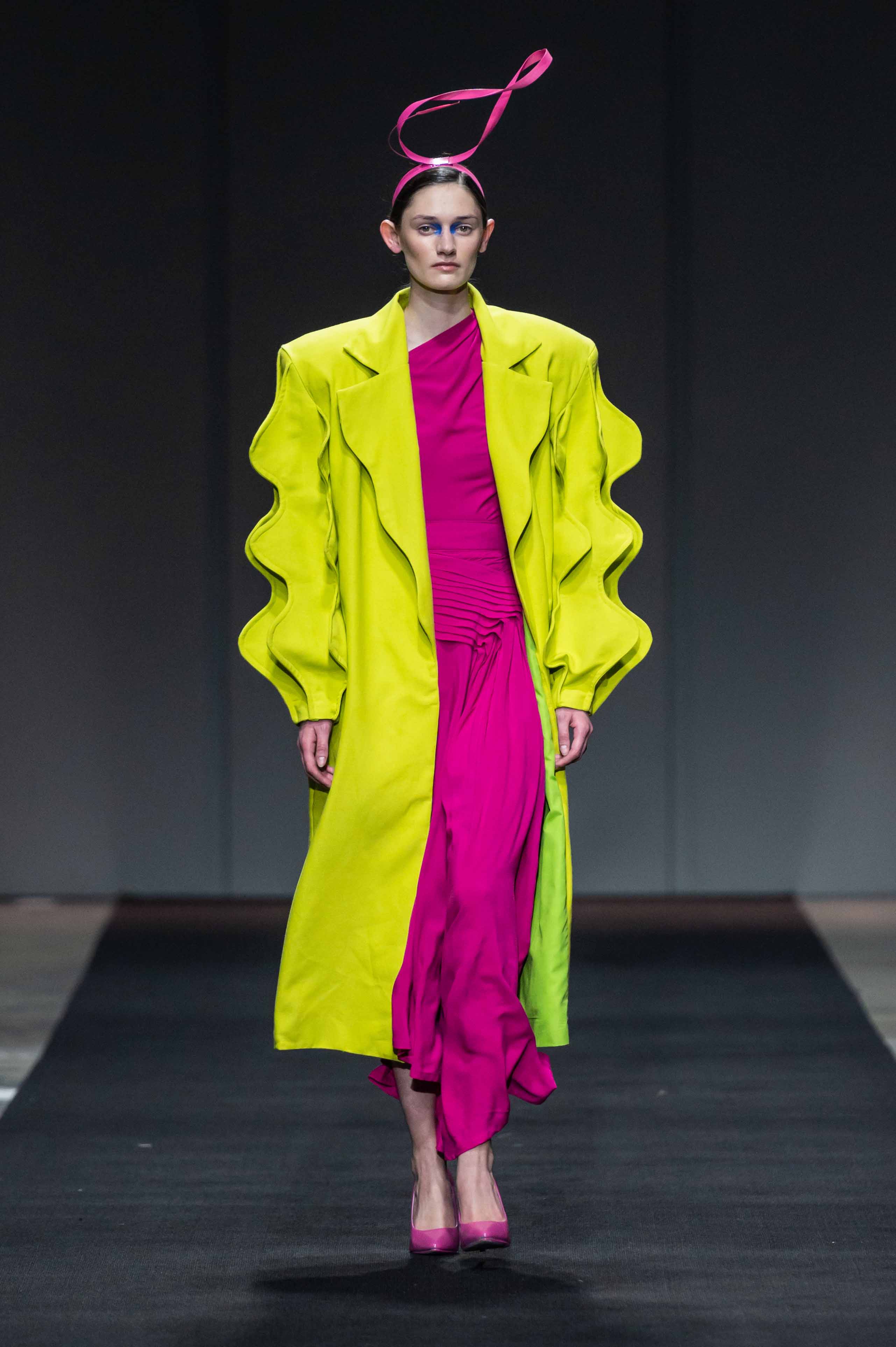
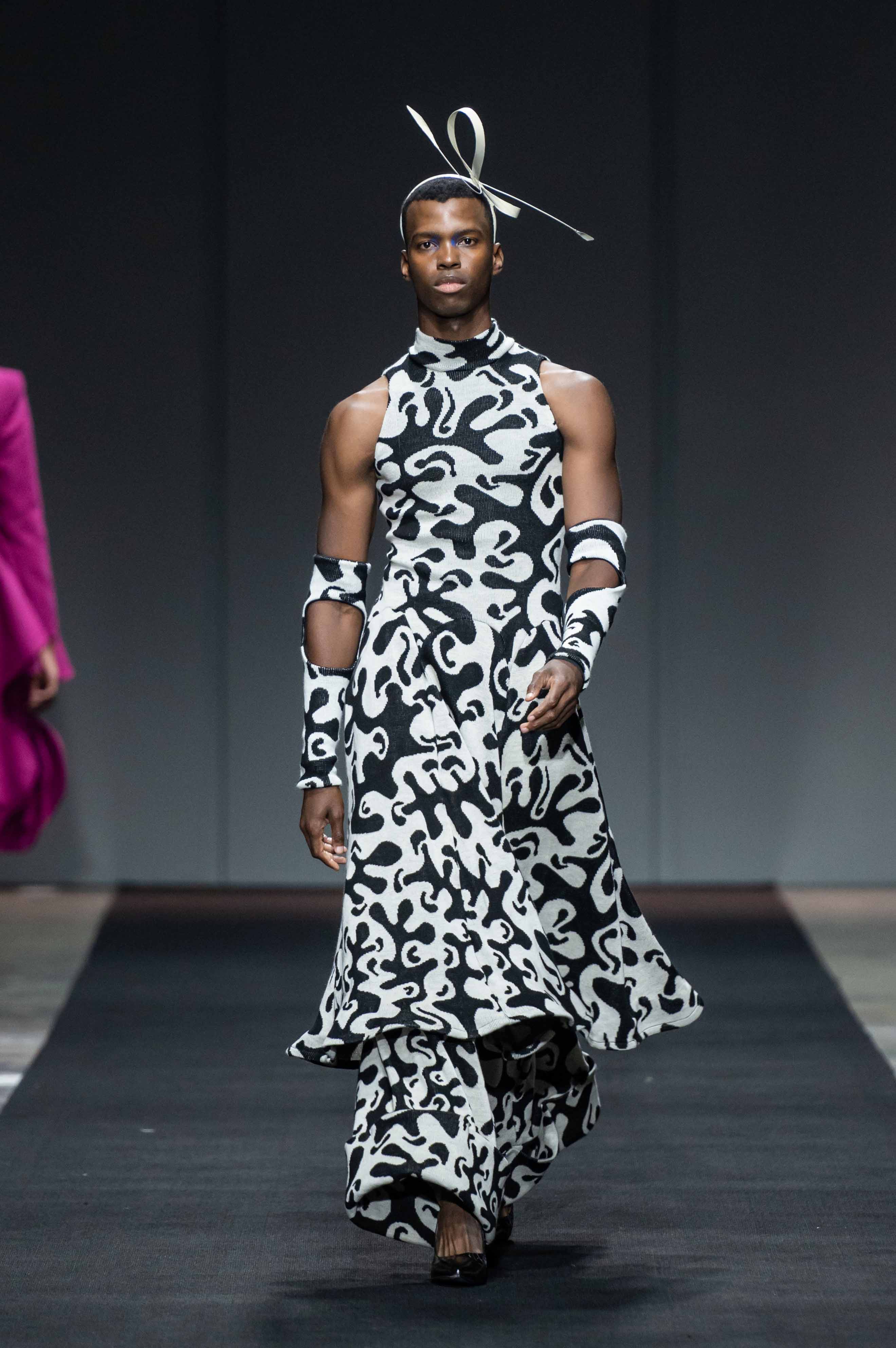

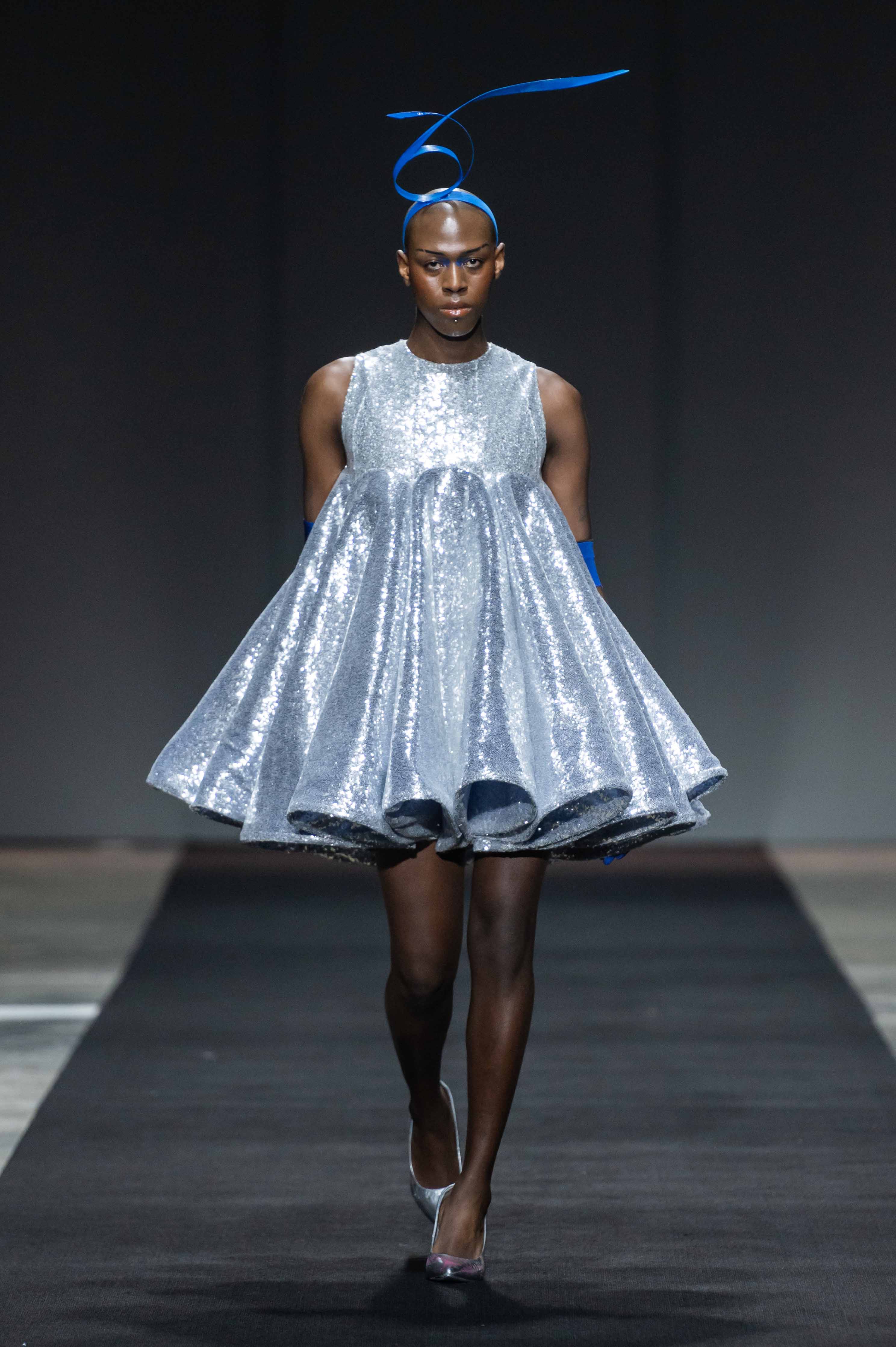
“I hope this collection will be a reminder of those who came before us, for we are the vessels of their love, courage and bravery,” says Nyambo MasaMara. Nyambo is a pseudonym based on Inyambo, the long-horned cow of great cultural significance in Rwanda, the designer’s homeland. The printed ‘horn’ headpieces that punctuated the show embody MasaMara’s heritage, a nod to his work as an interdisciplinary artist that brings a perfect level of showmanship to the runway. Autobiographical elements help the designer feel in touch with his mother, who passed away in 2020, and who this collection is dedicated to. “My love for fashion, textiles and everything creative comes from my mom and grandfather.”
This cathartic manifestation of ready-to-wear showcases talent both inherited and developed. A MasaMara print draws from various African cultures, aligning the meaning of colours and symbols with a collection’s narrative. This season’s prints, “inspired by royalty, loyalty, and humility,” are presented on a holistic rotation of real-world clothing that balances contemporary suiting with Insta-ready streetwear (puffer jackets, yes, but also quilt-stitched puffer skirts) and a simple, standout column dress. Audience enthusiasm reverberated through the show space, prompting cheers, tears and a standing ovation. That energy cannot translate in its entirety to the social media frenzy that follows, a testament to the relevance and vitality of fashion week.
